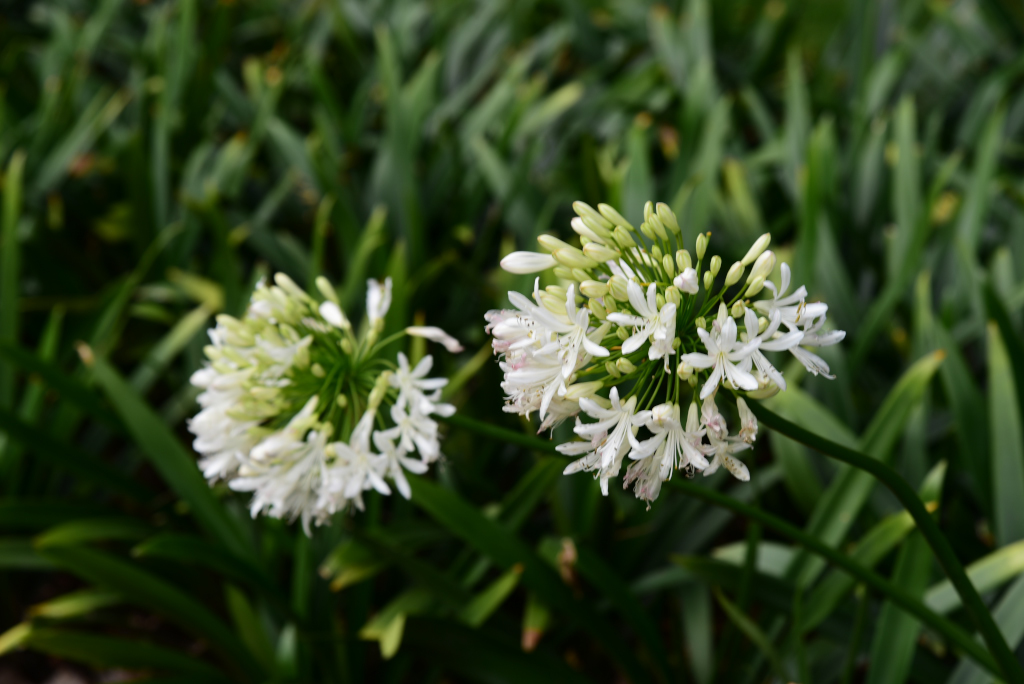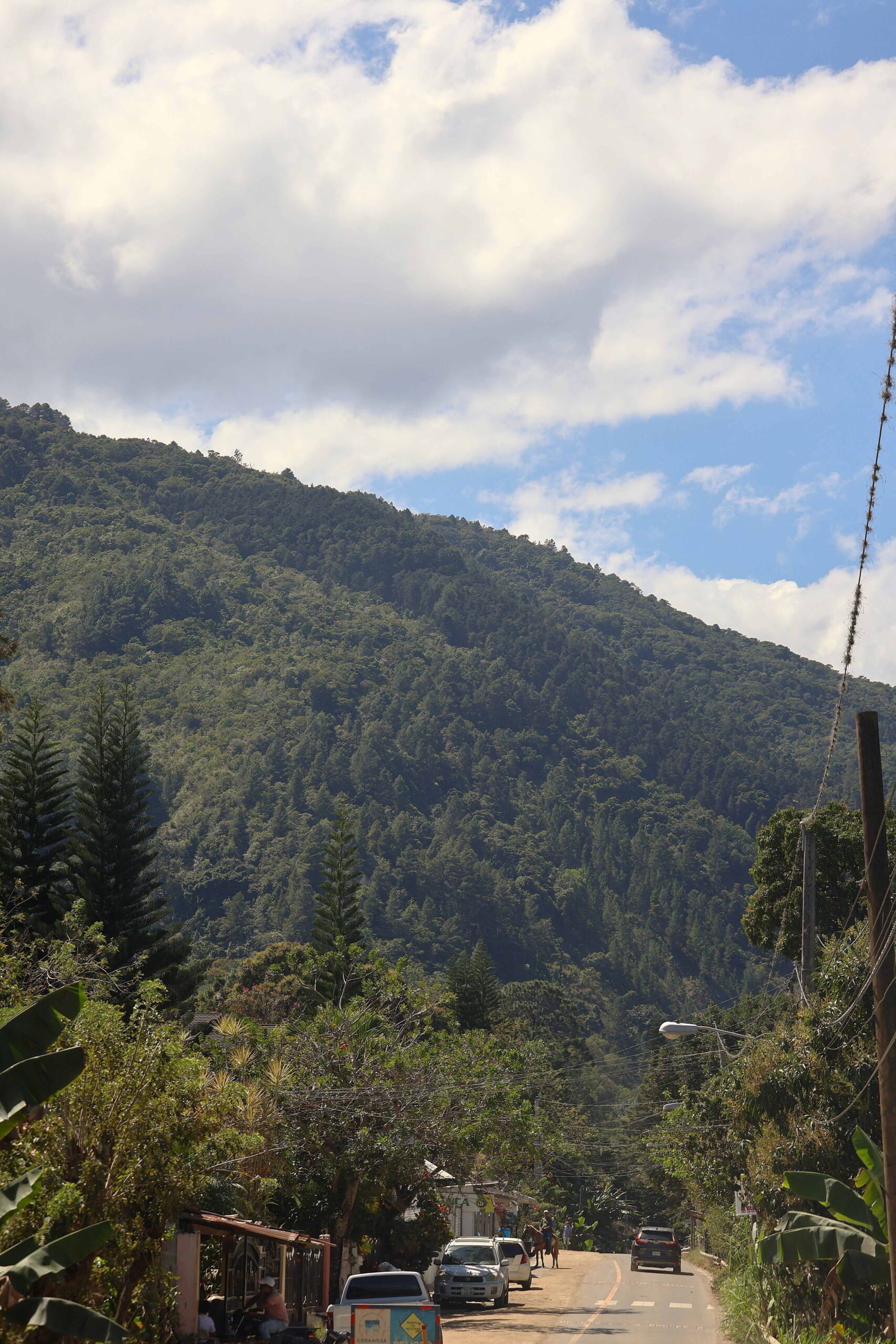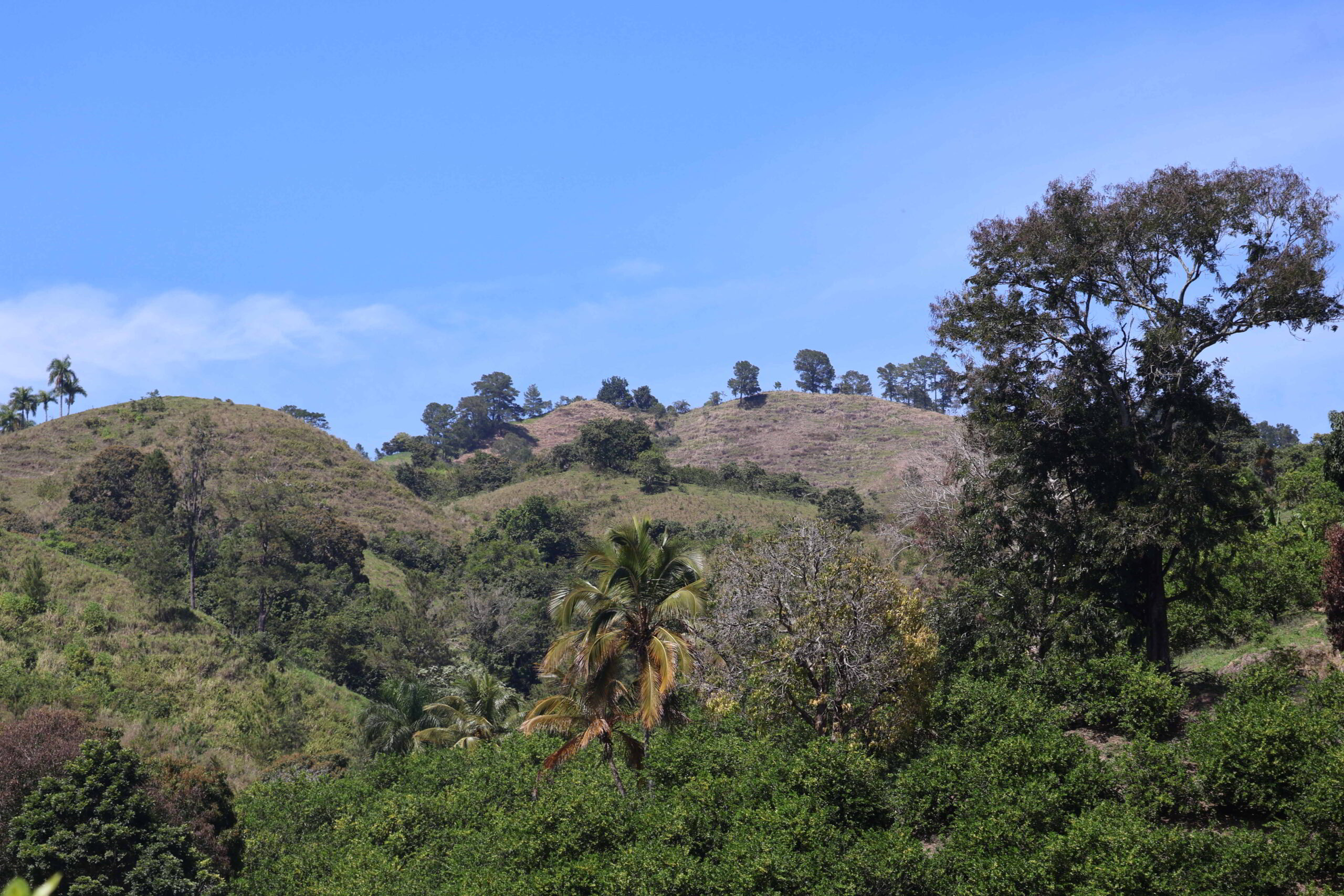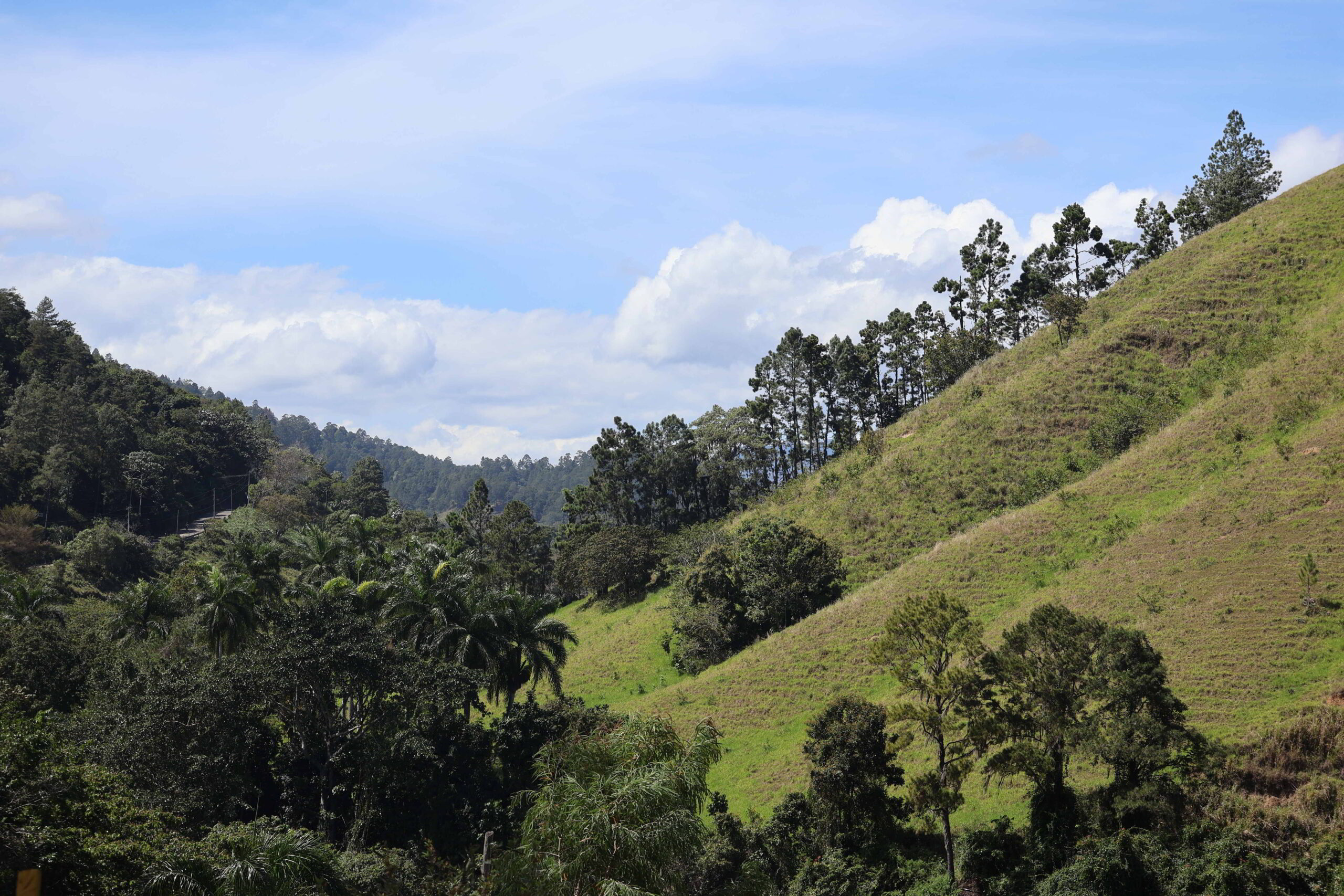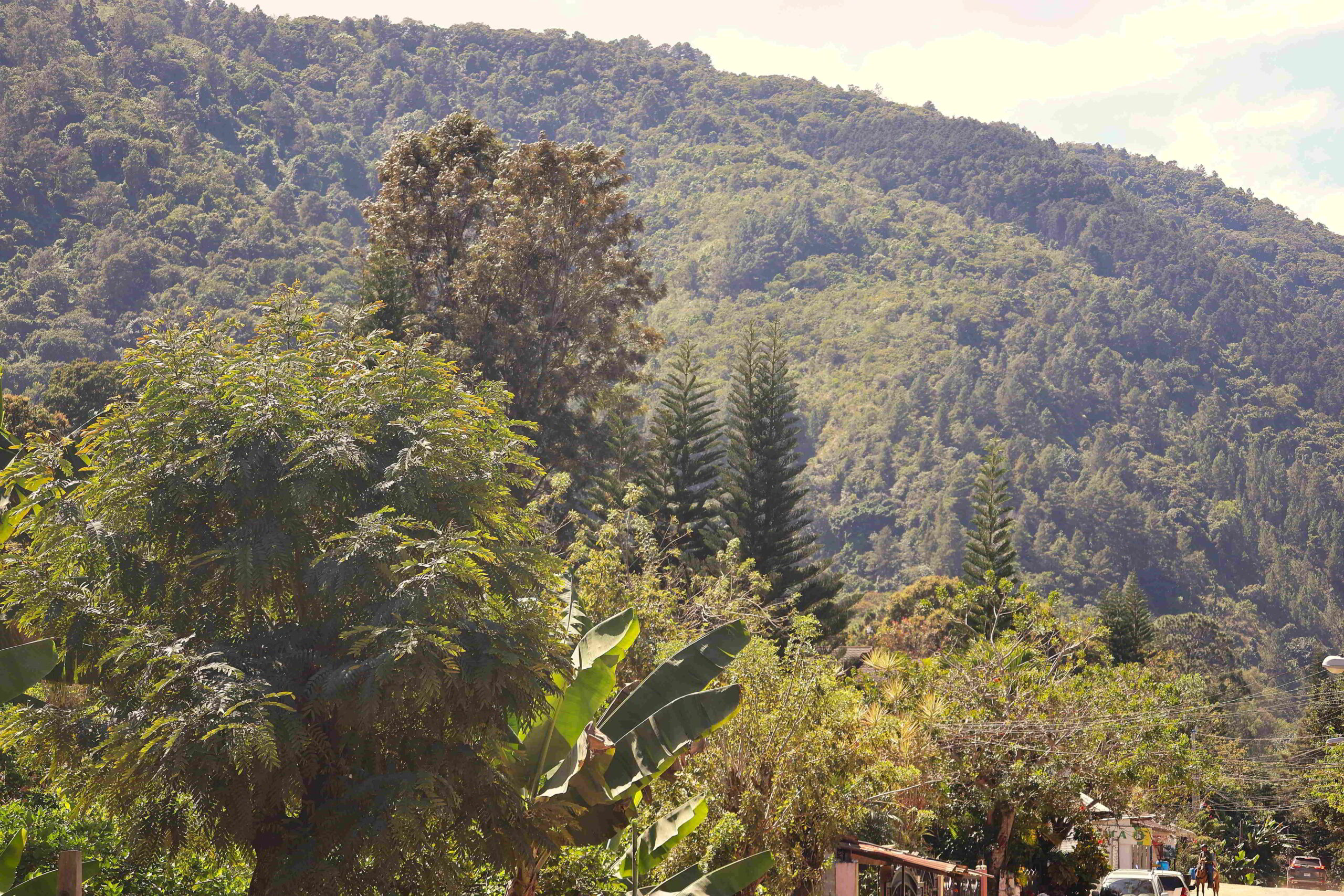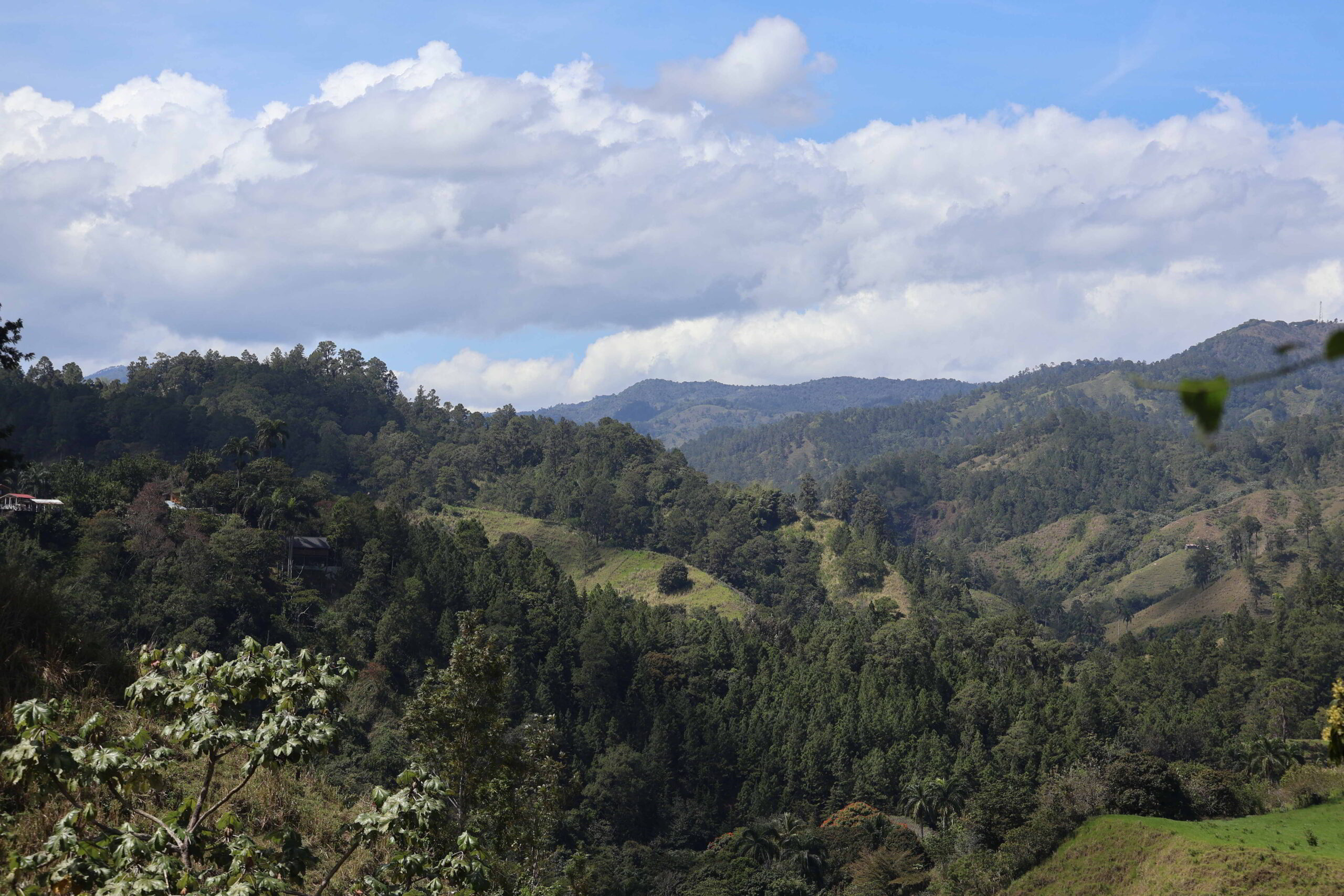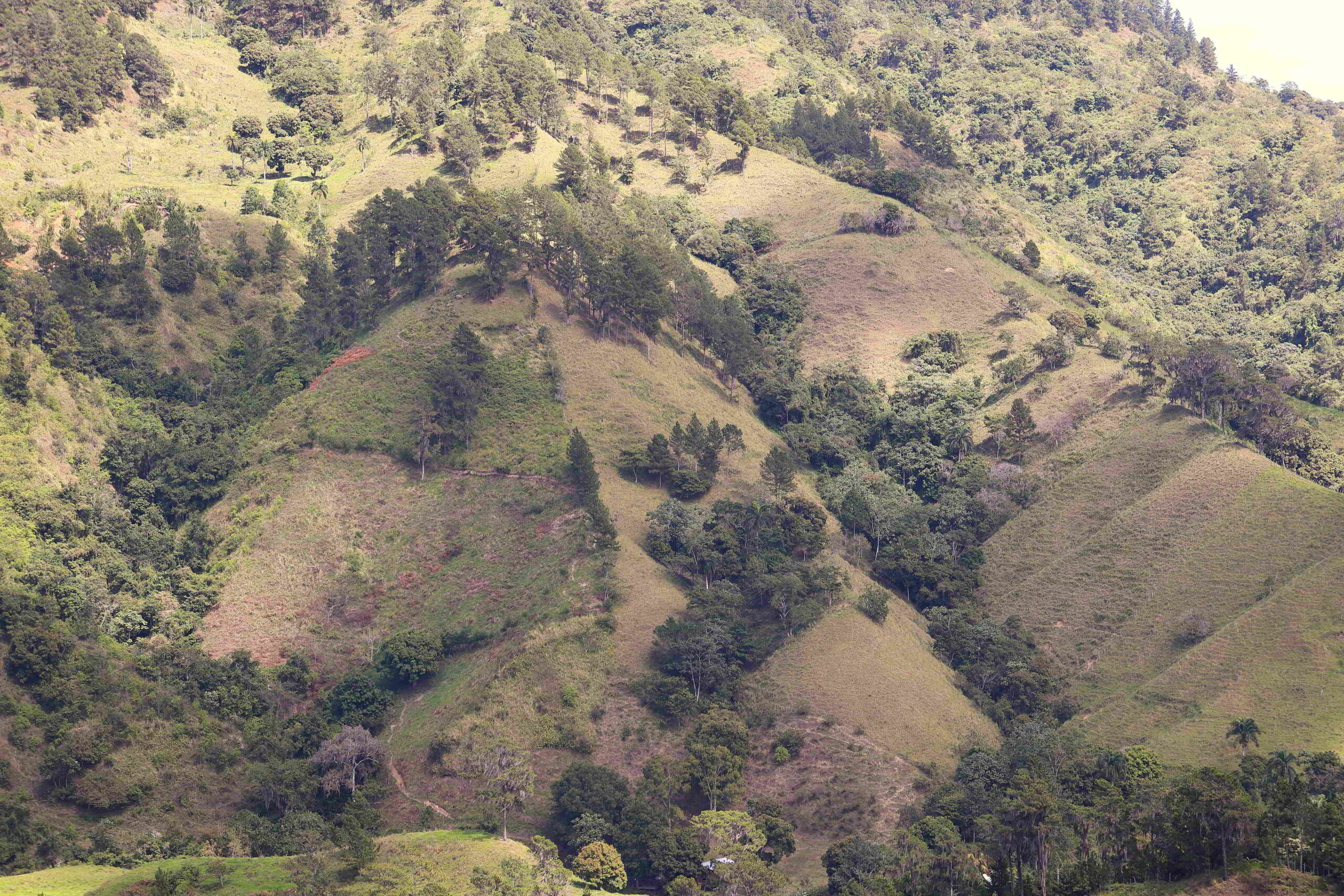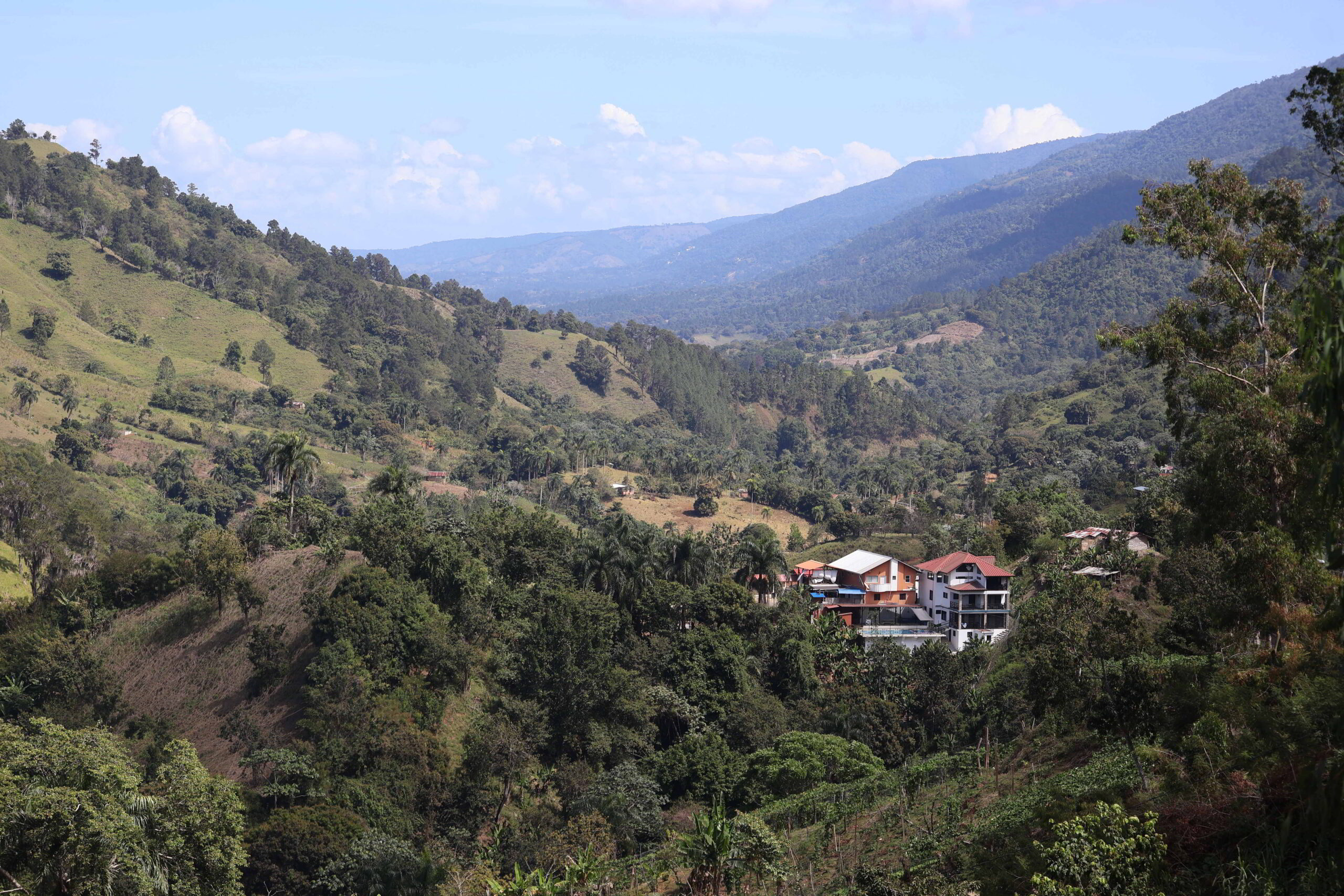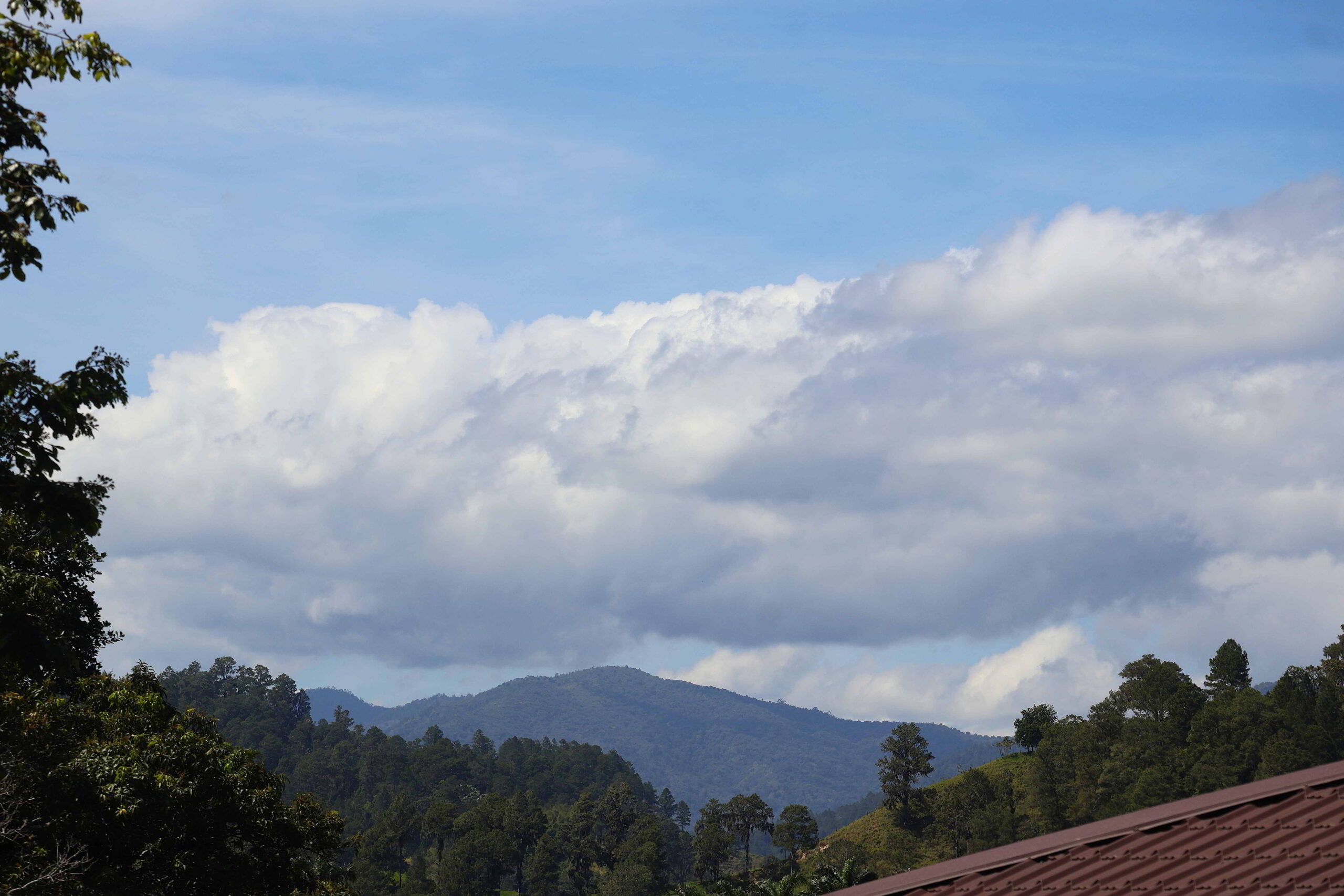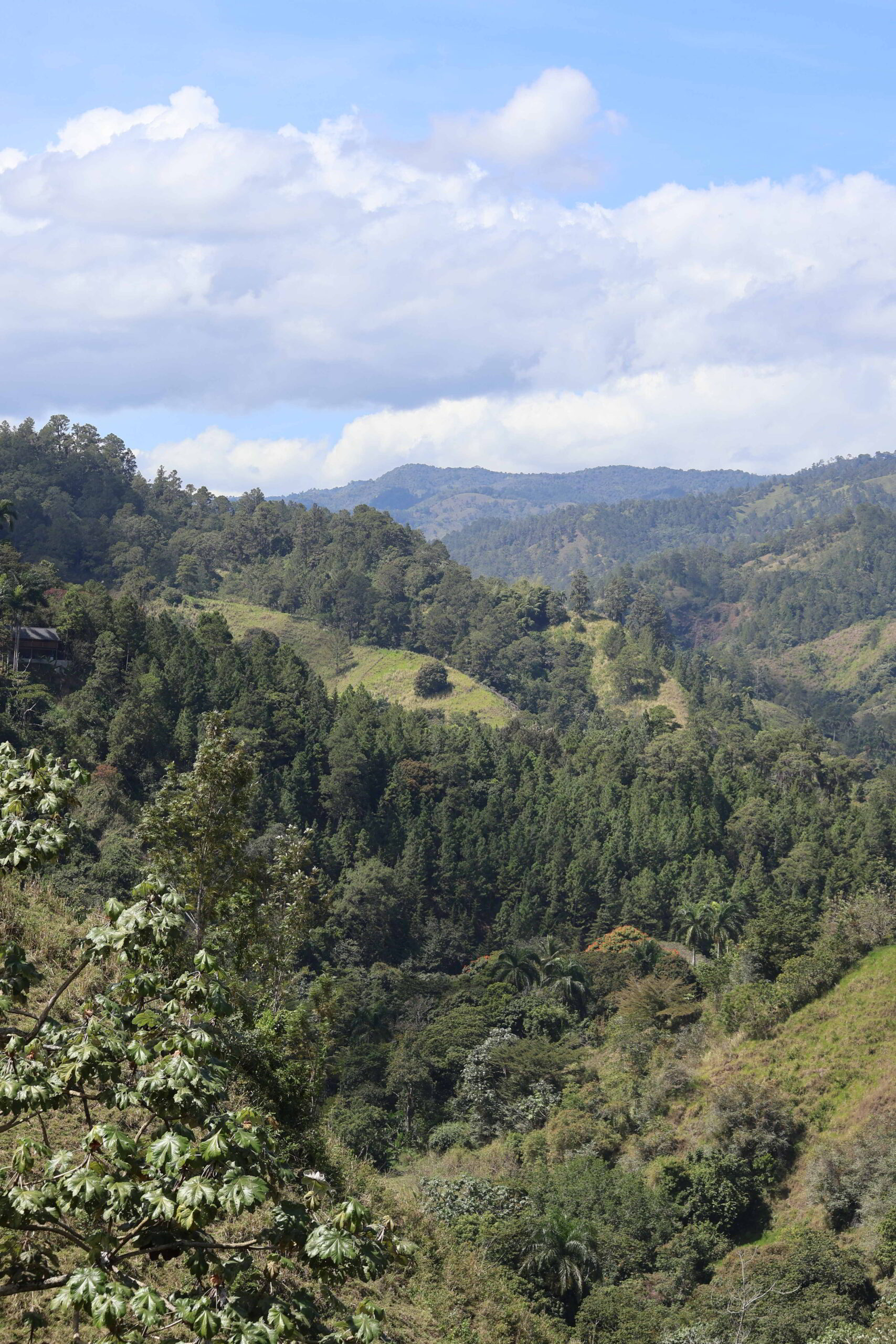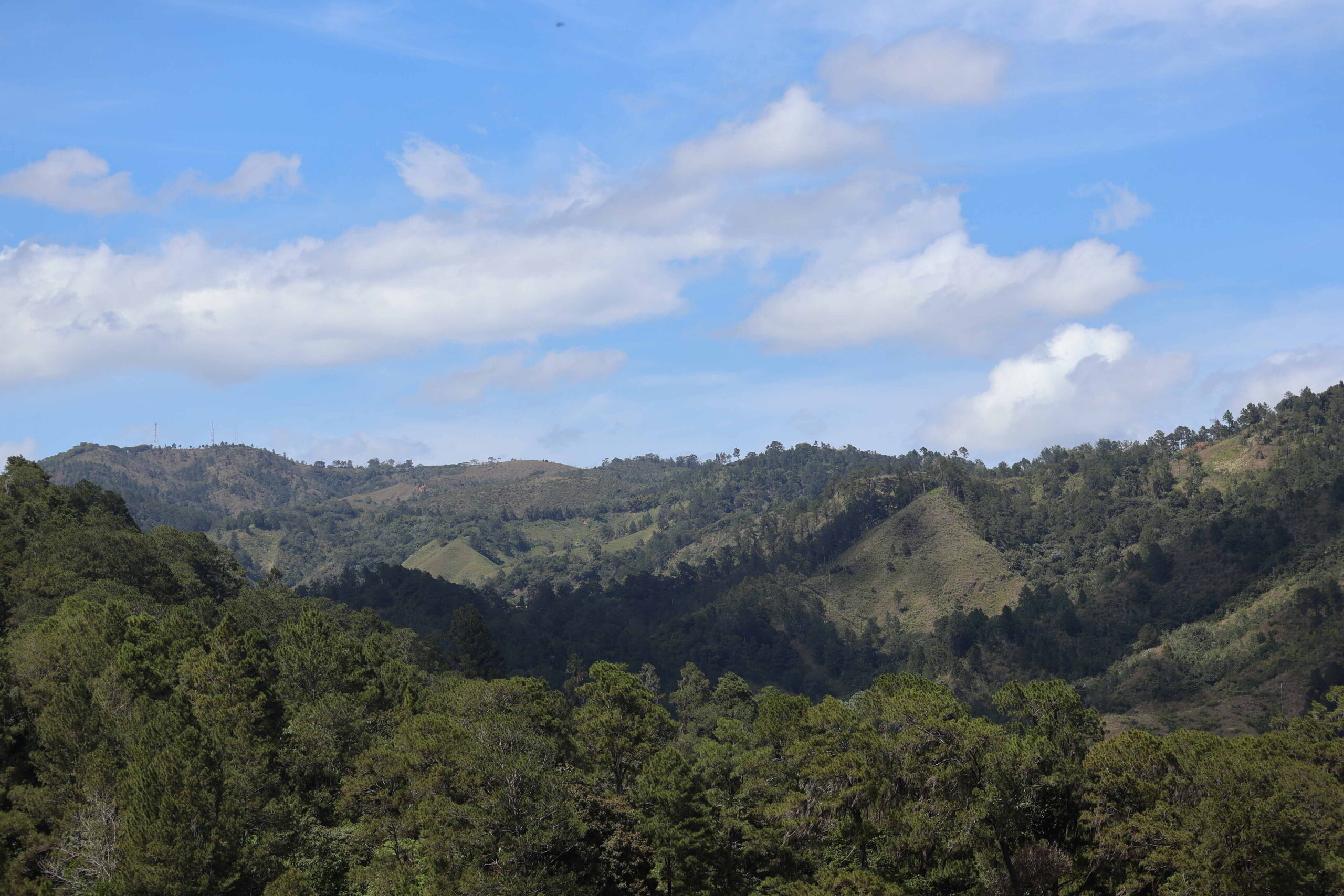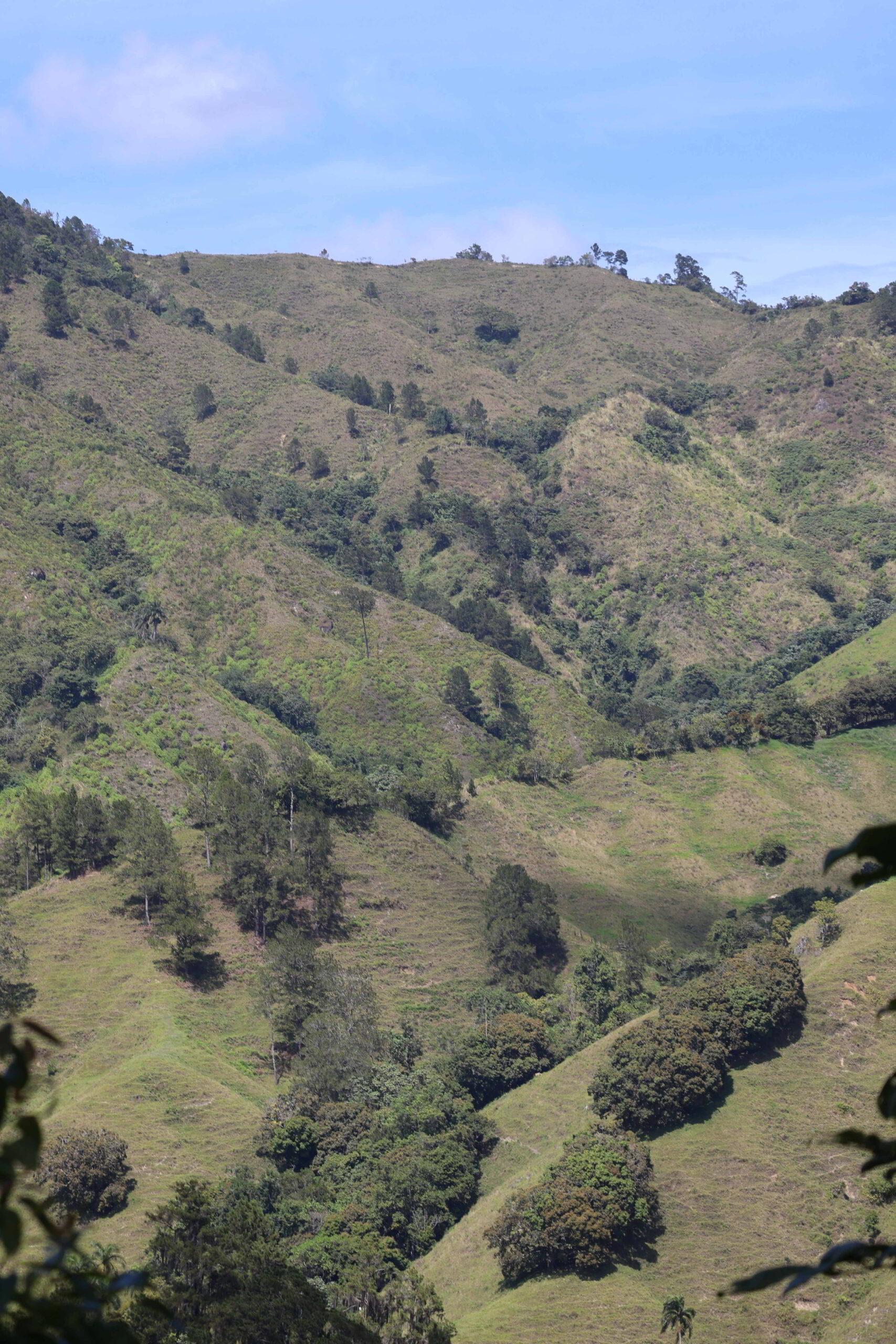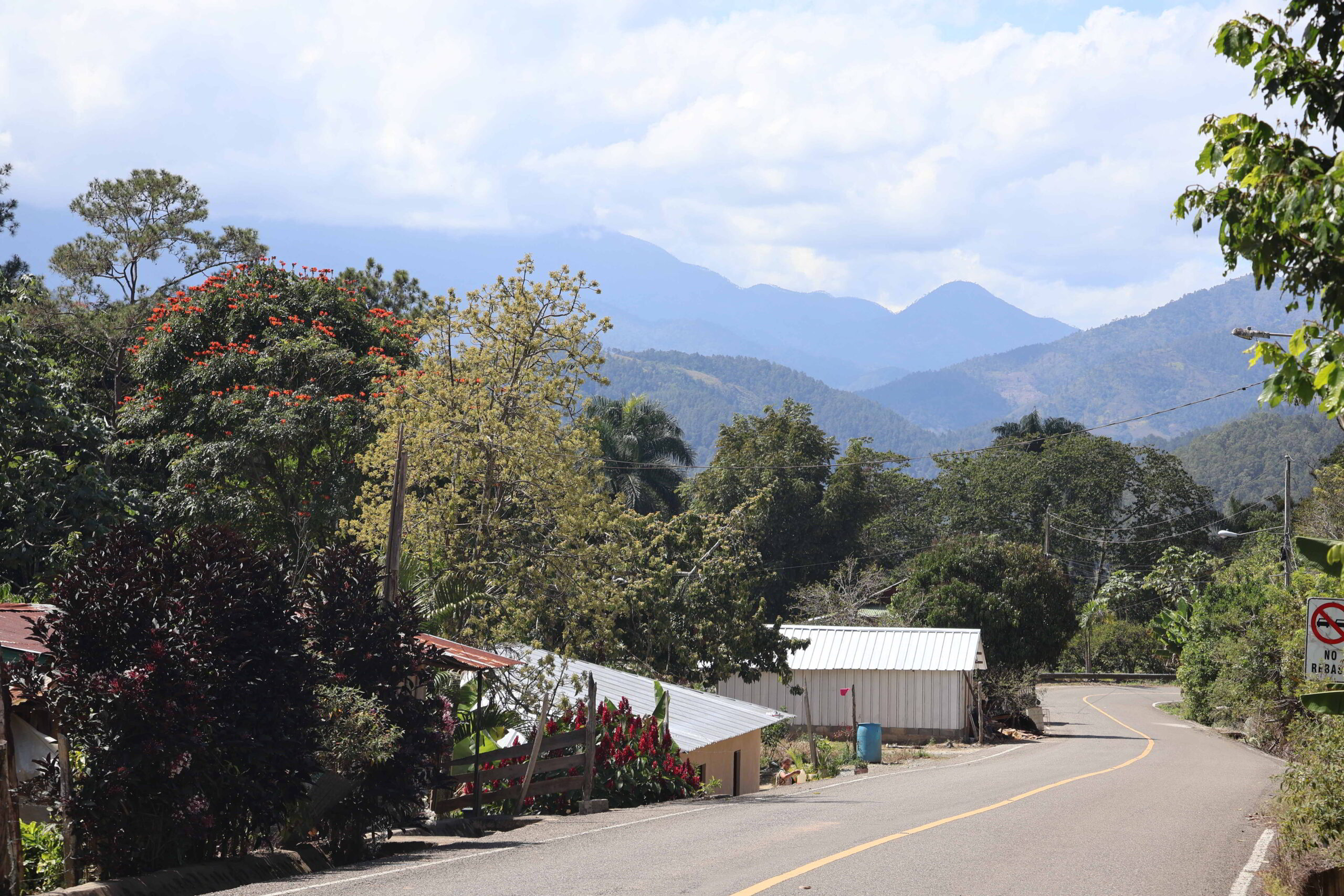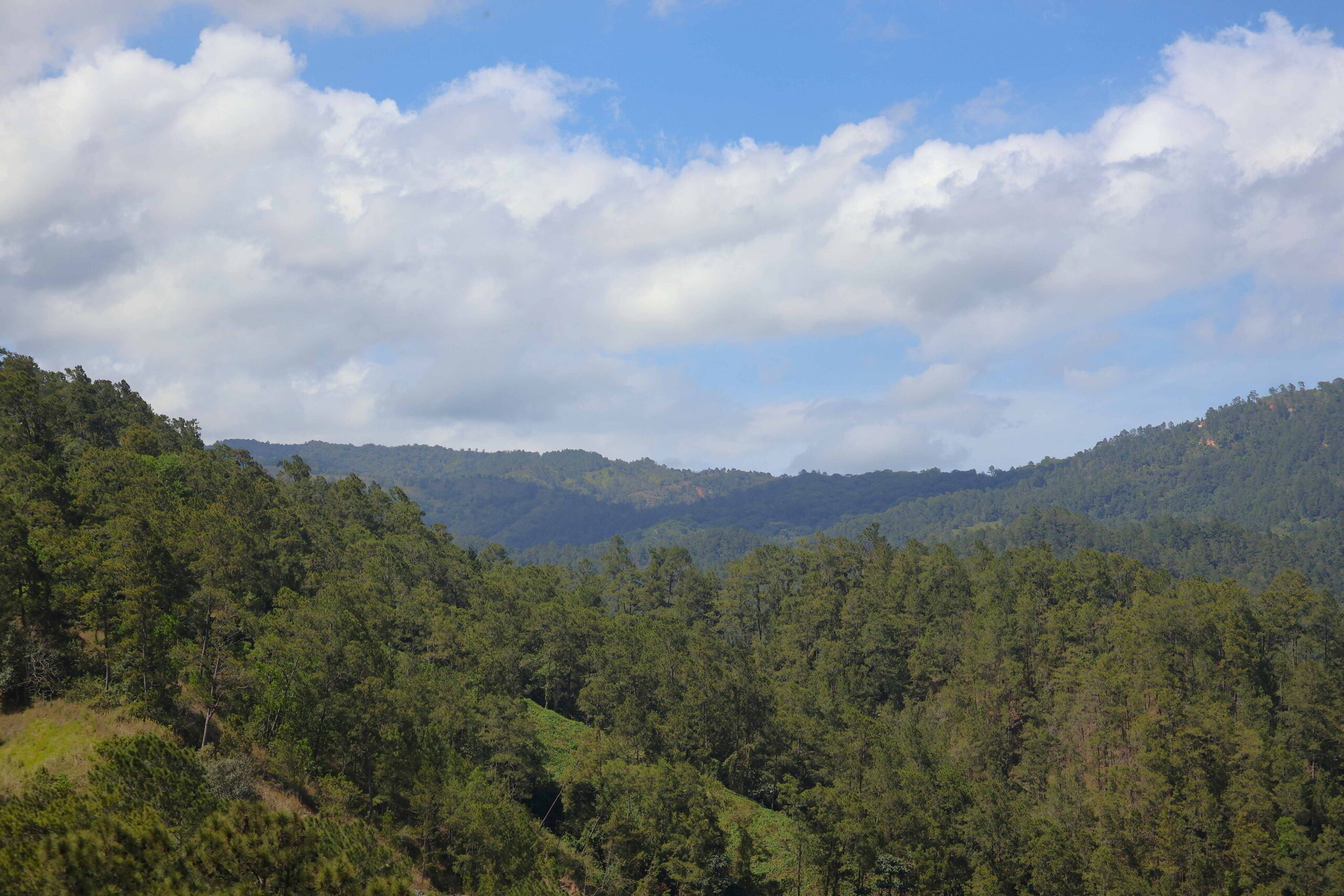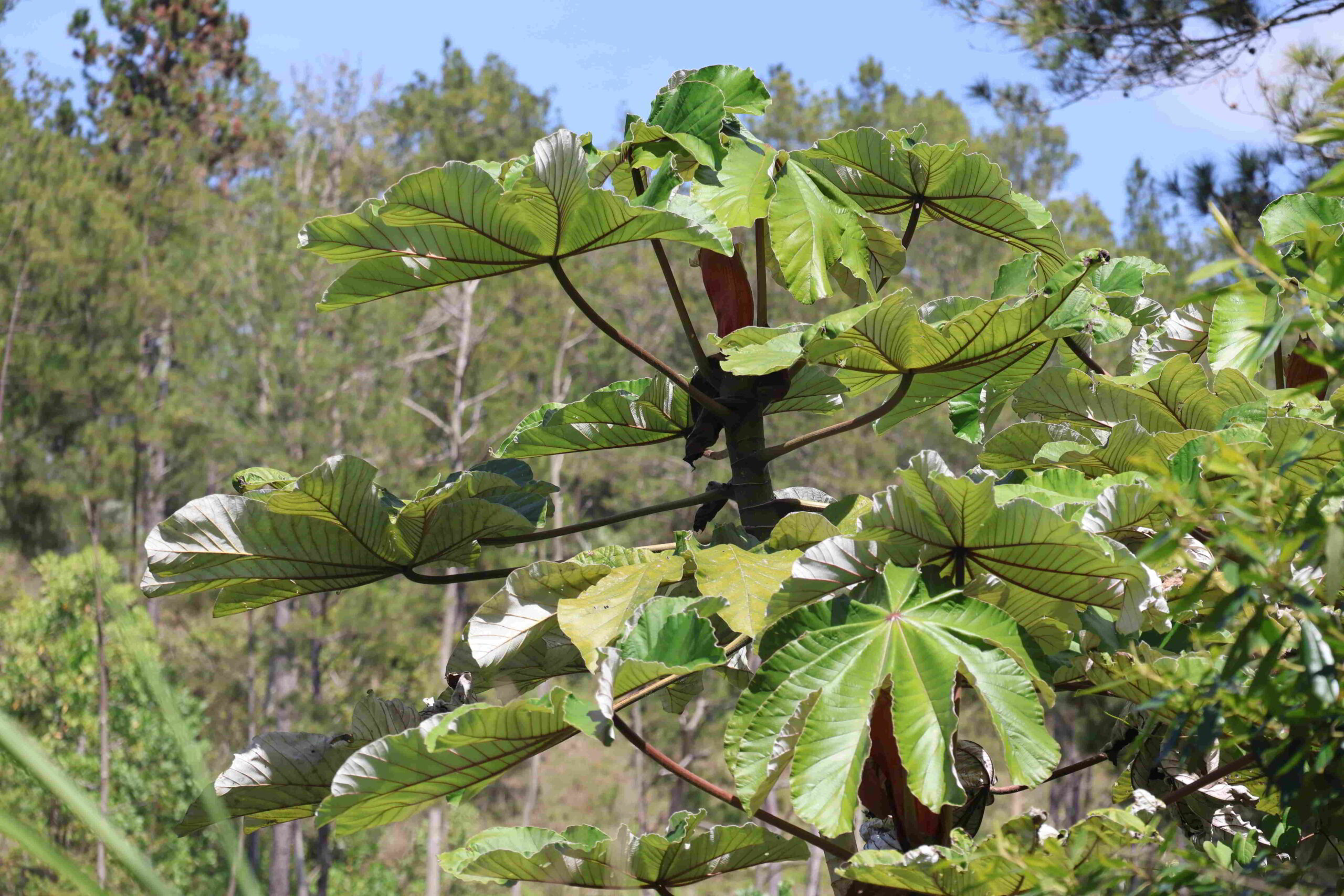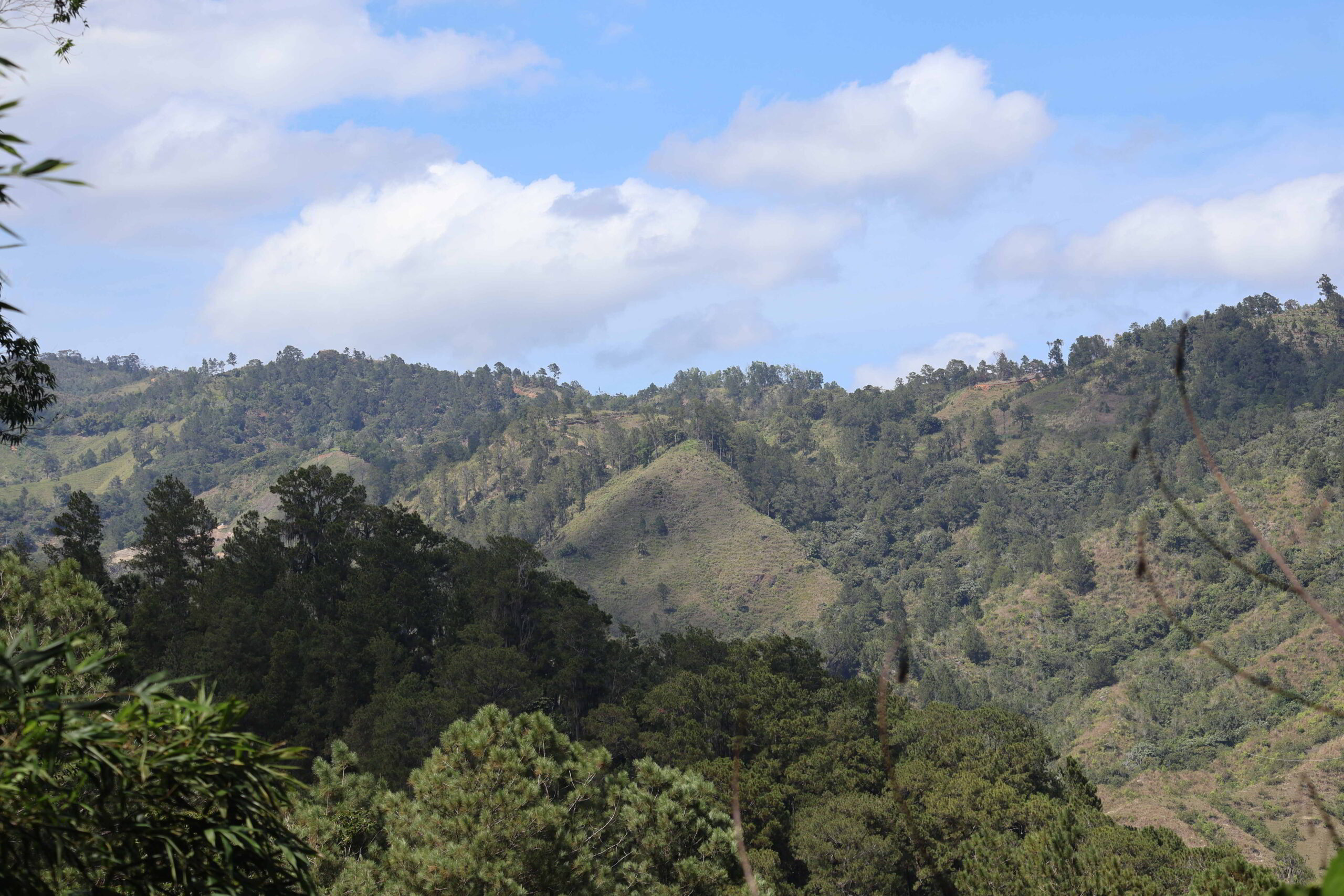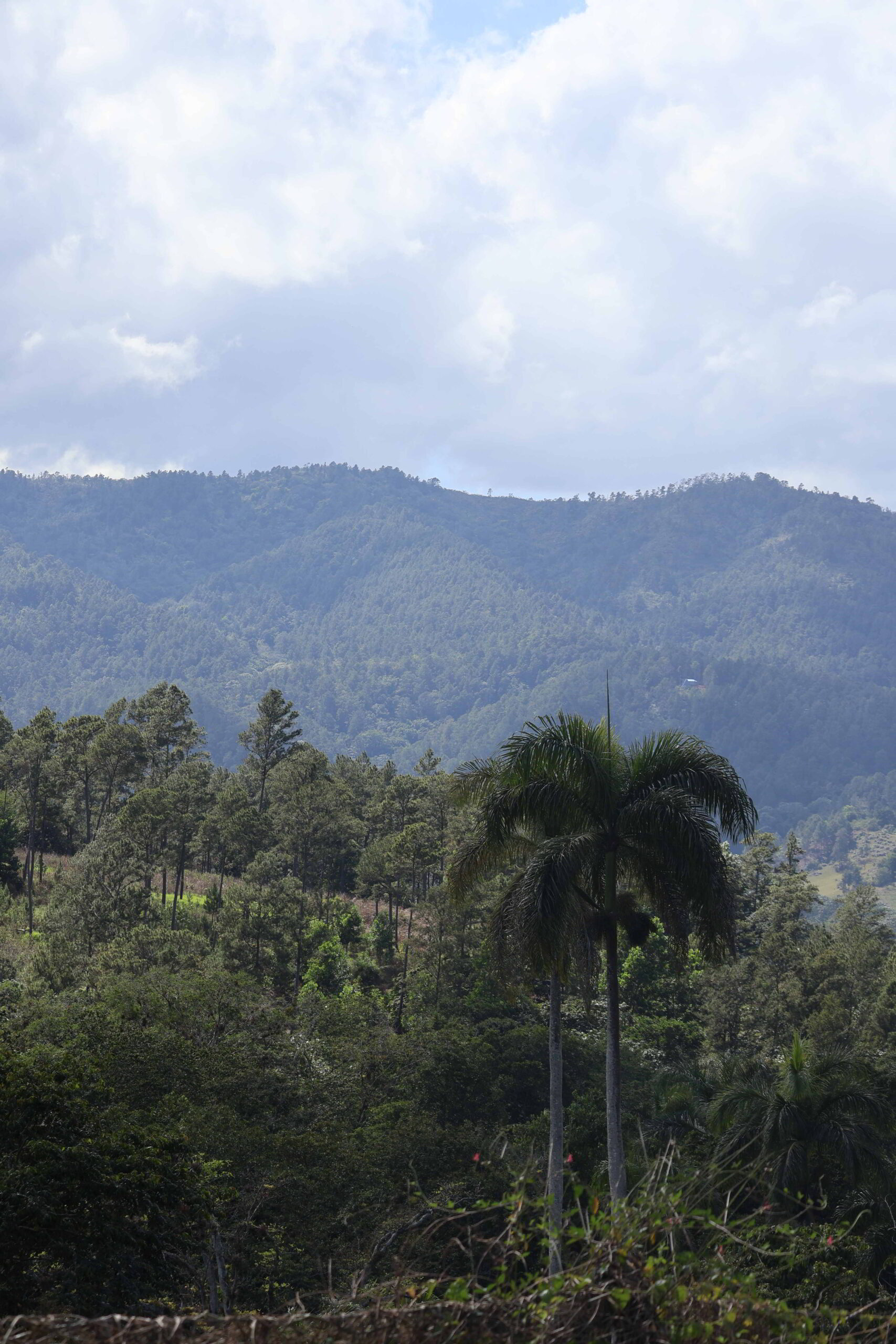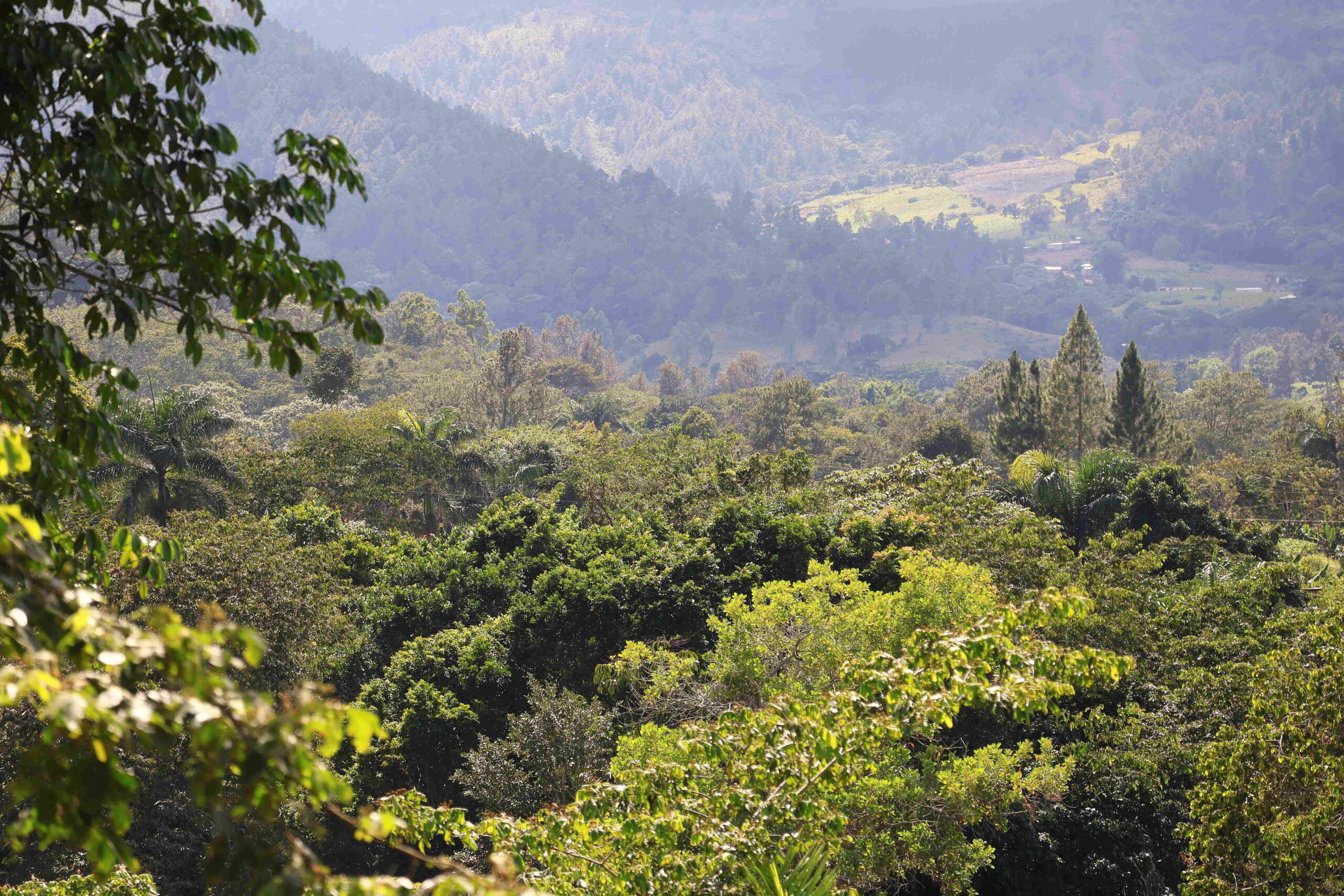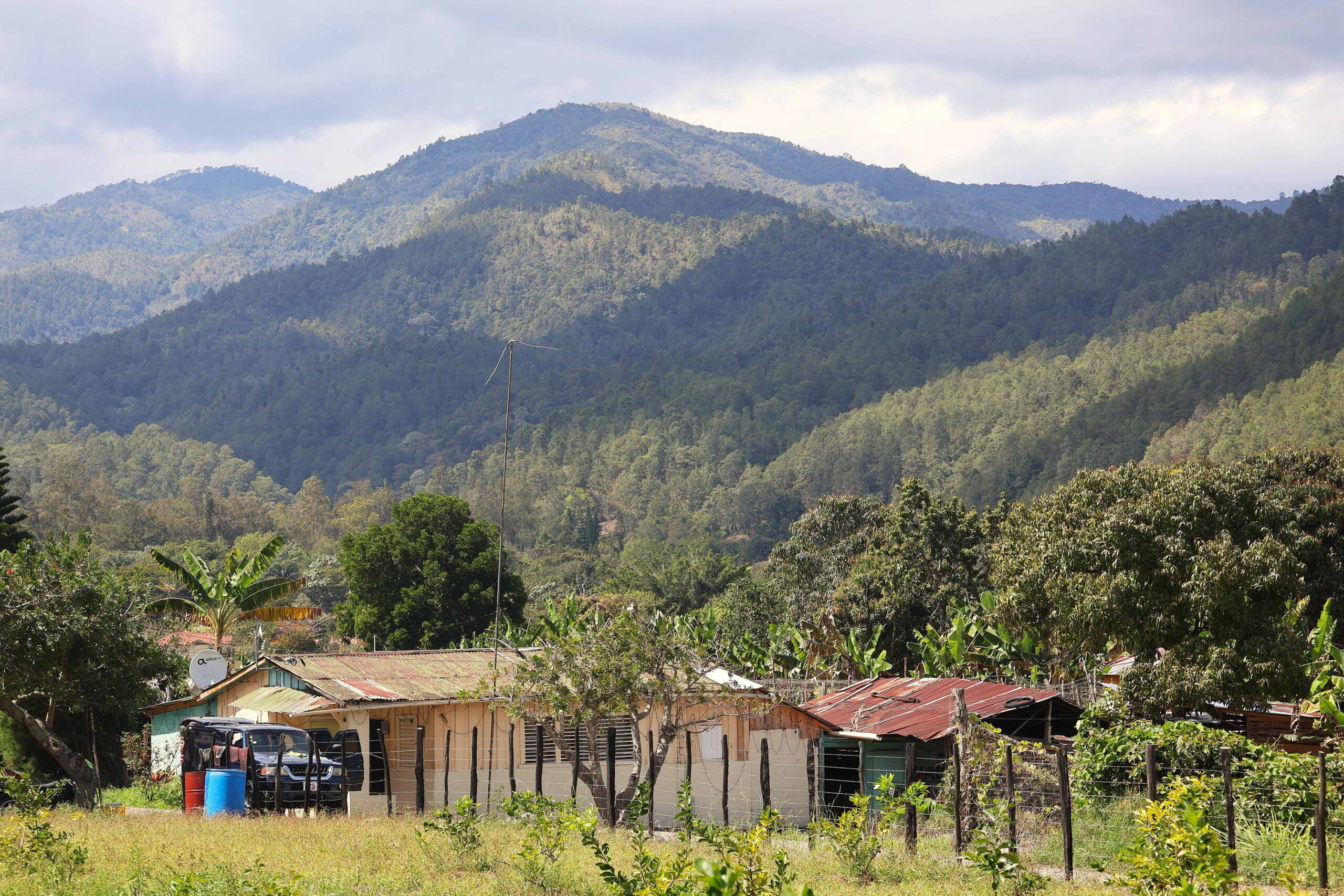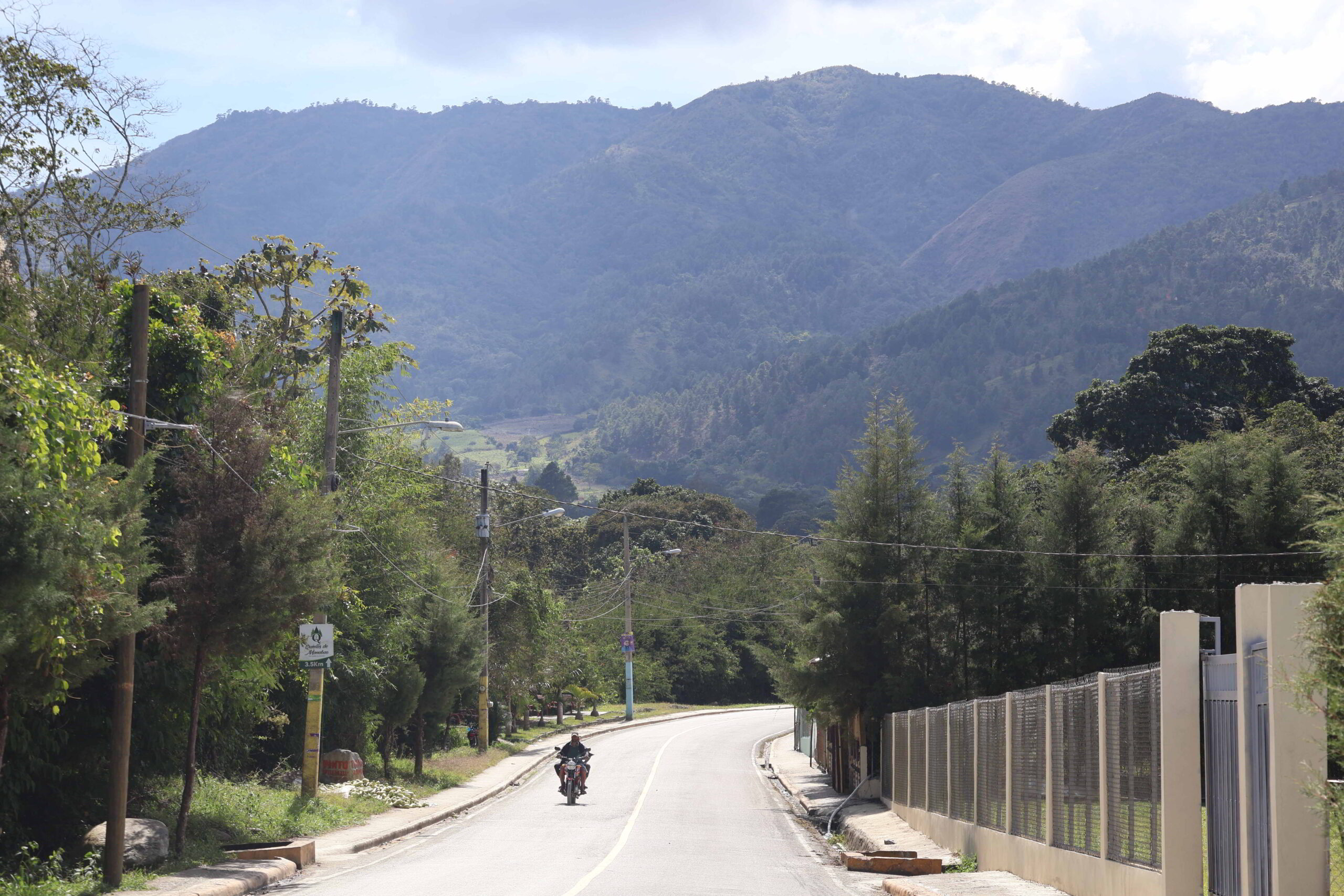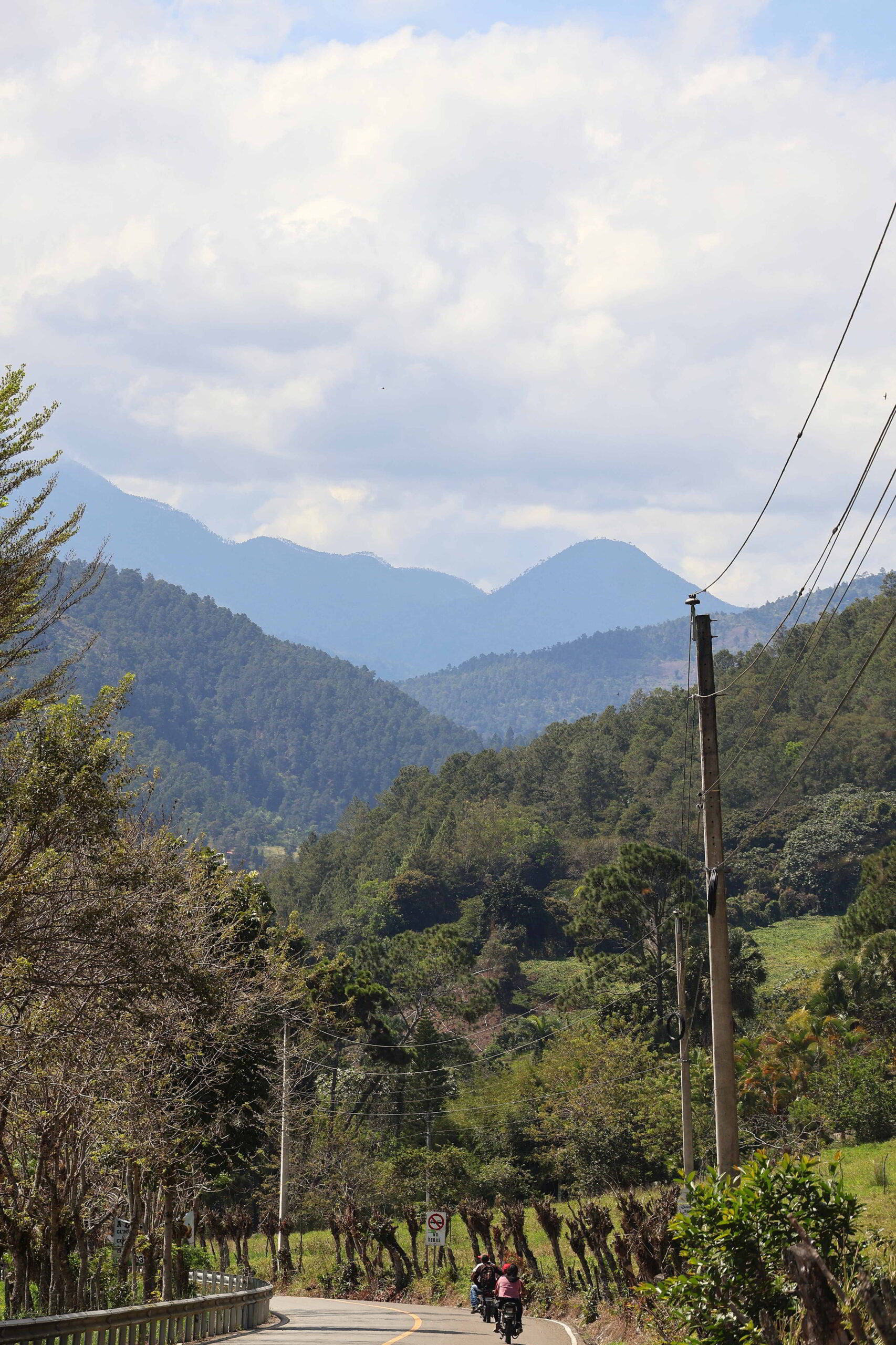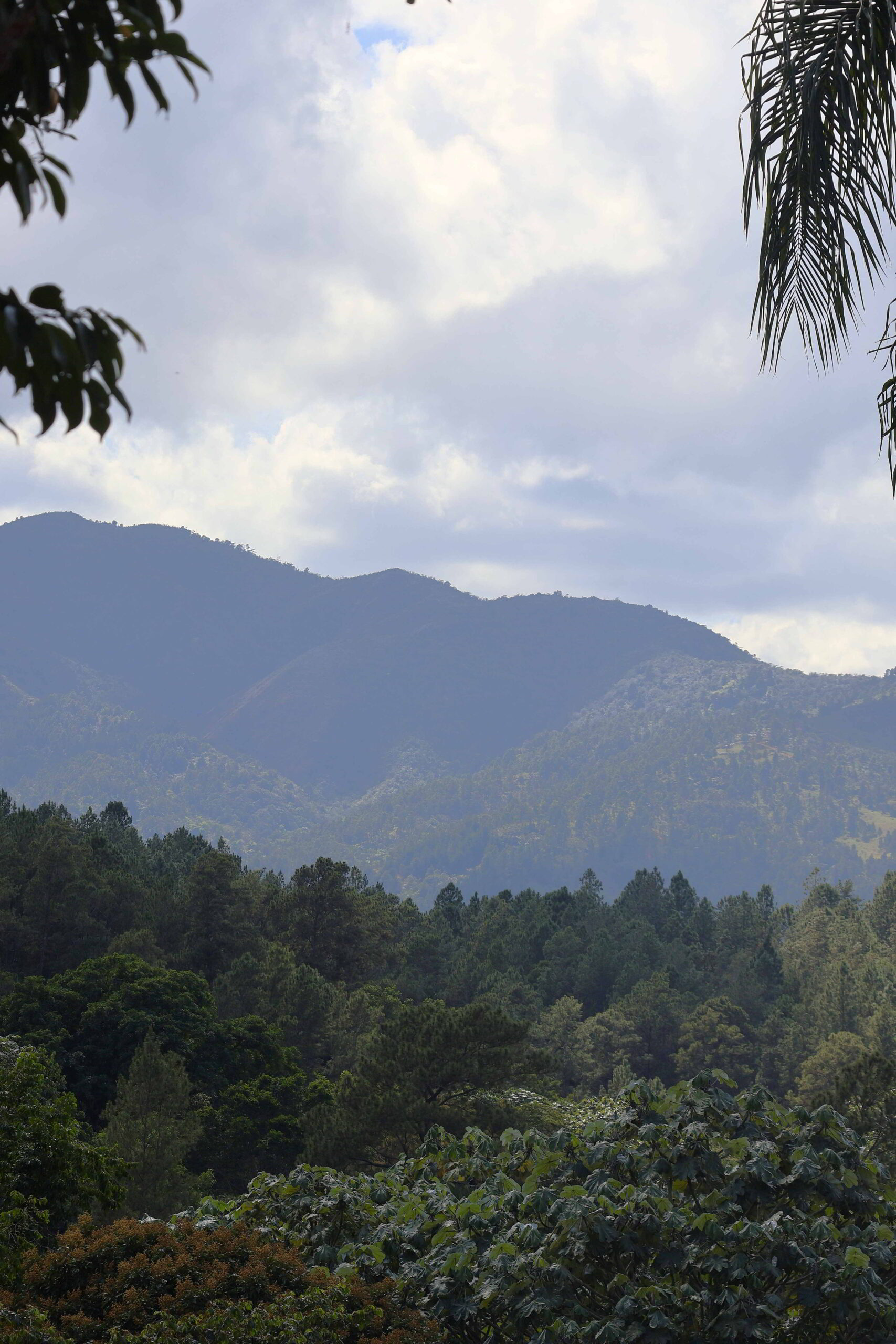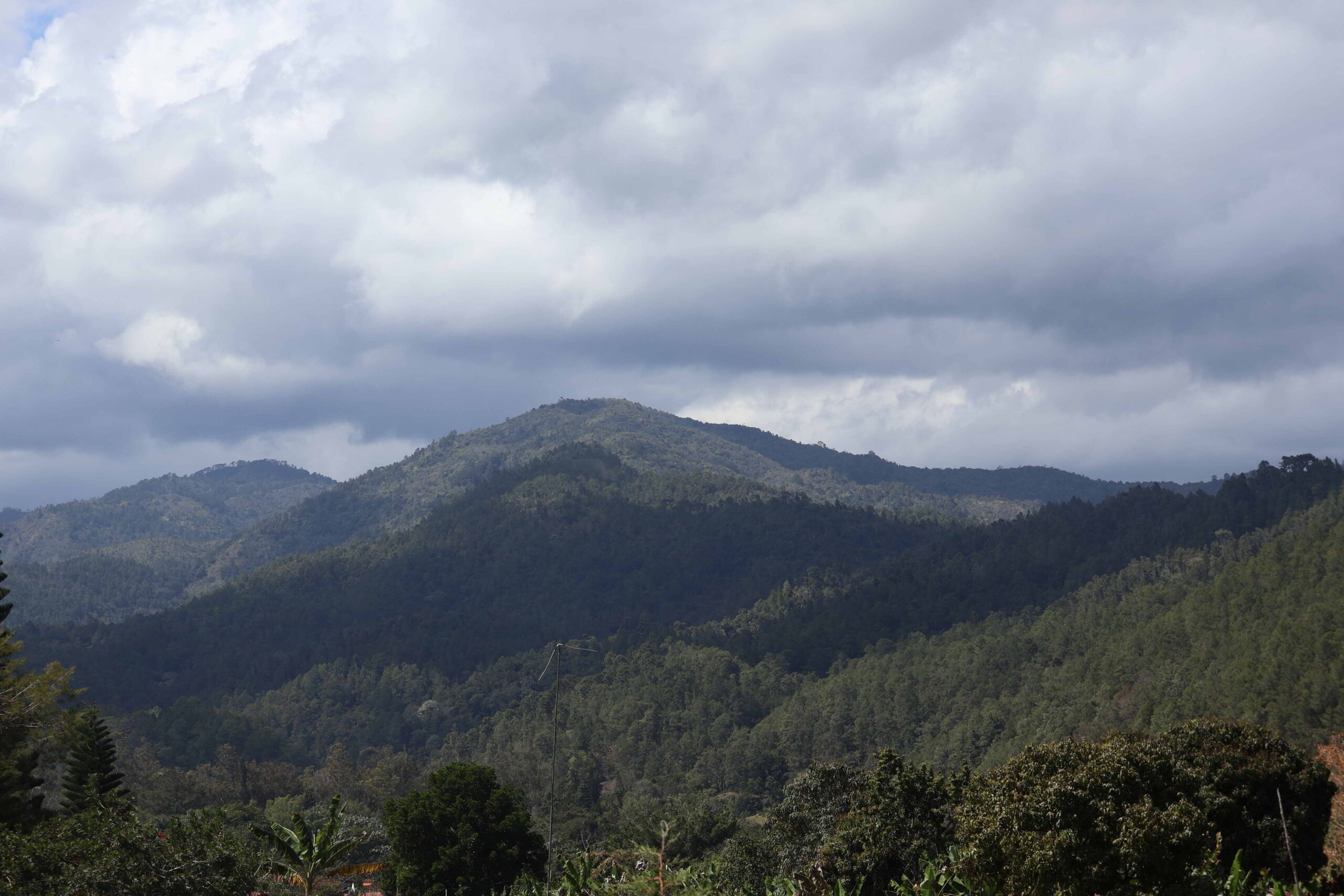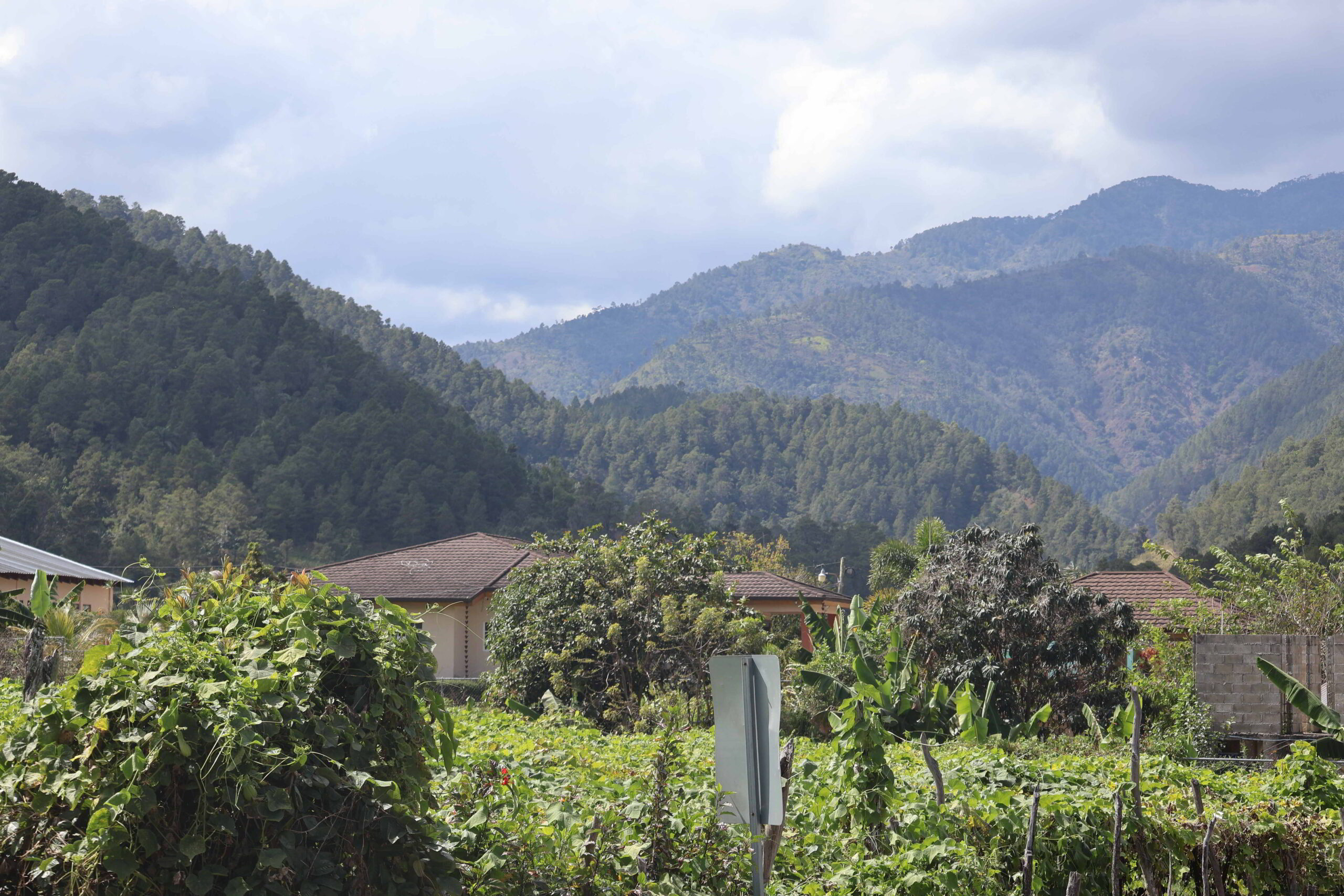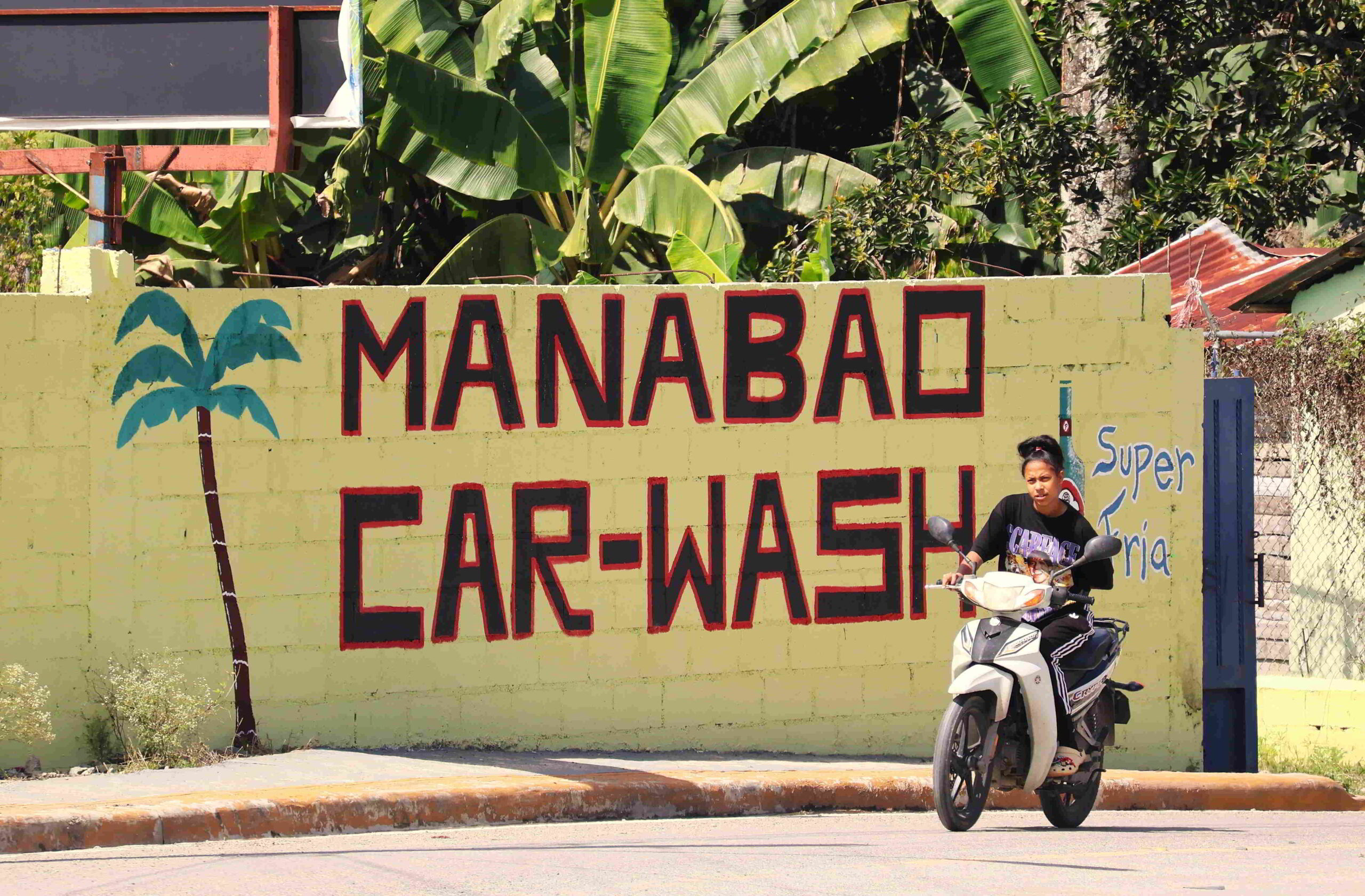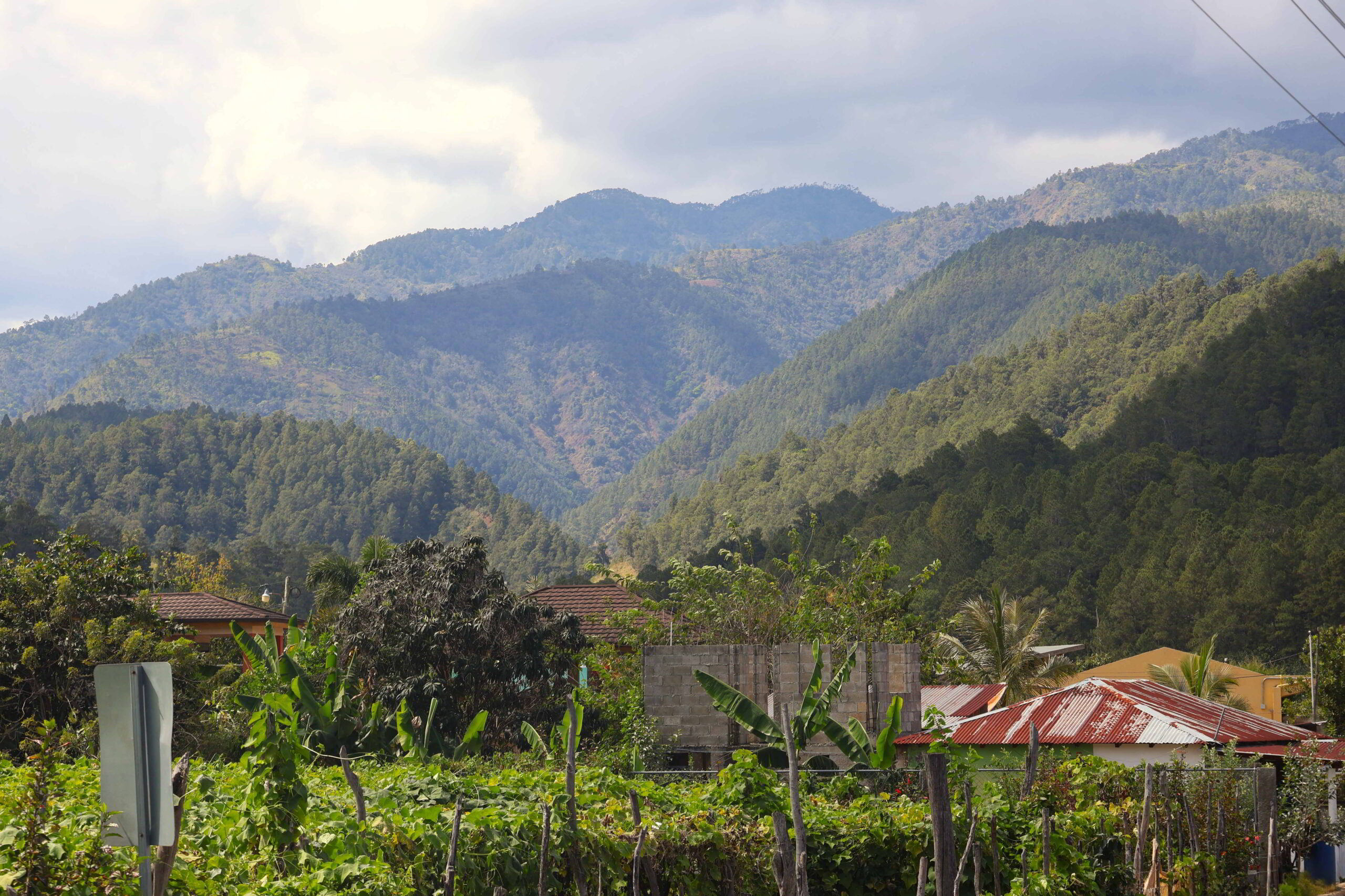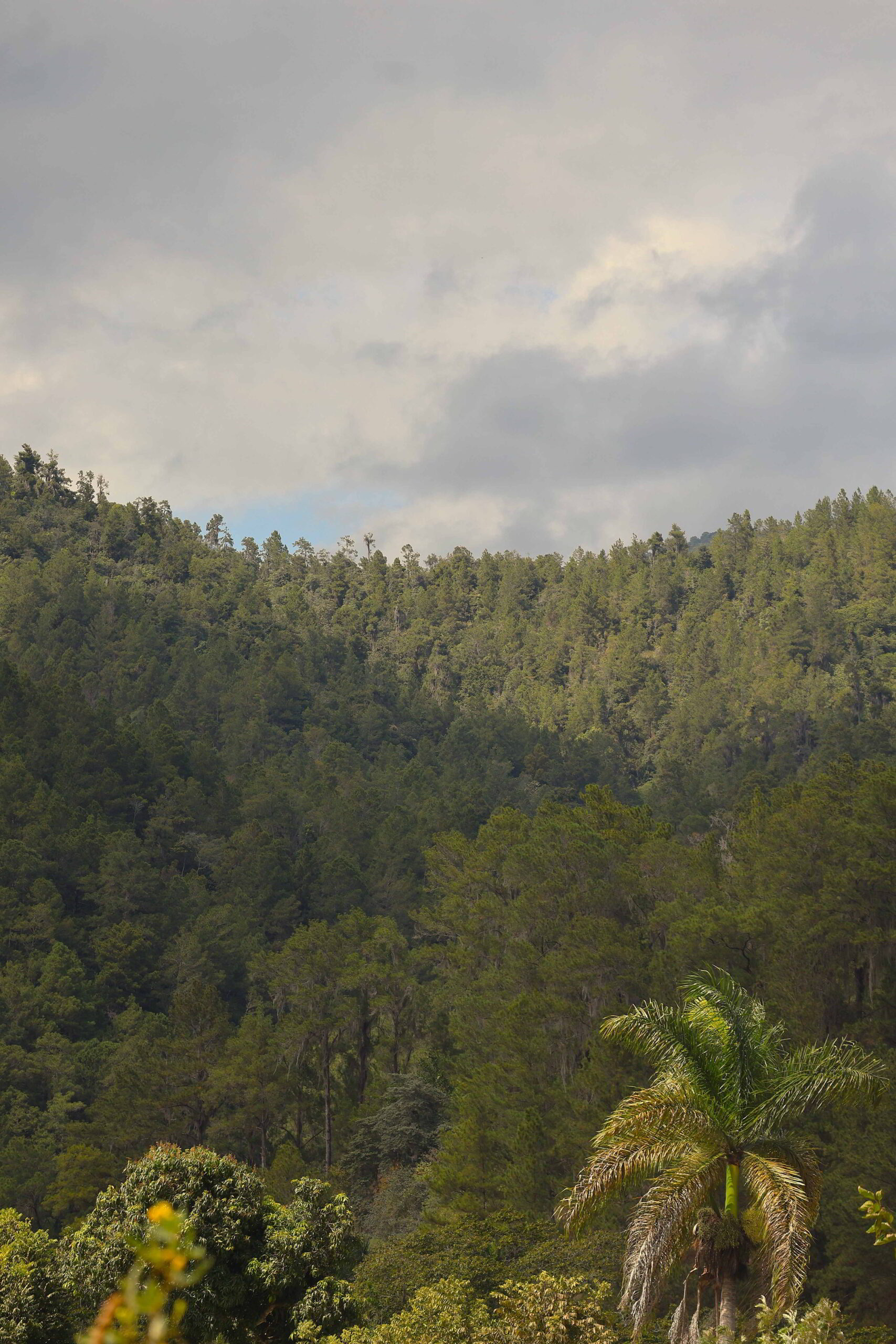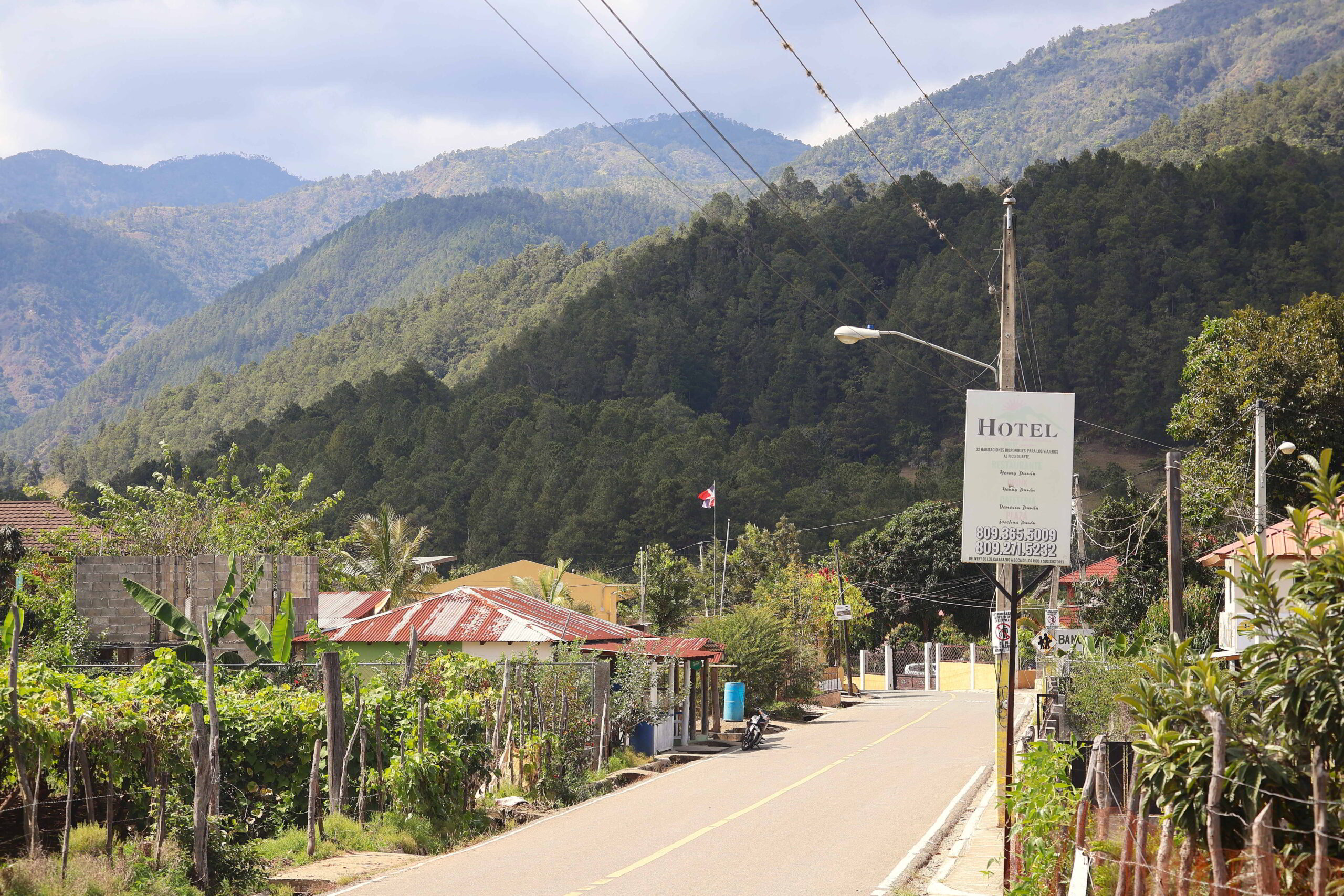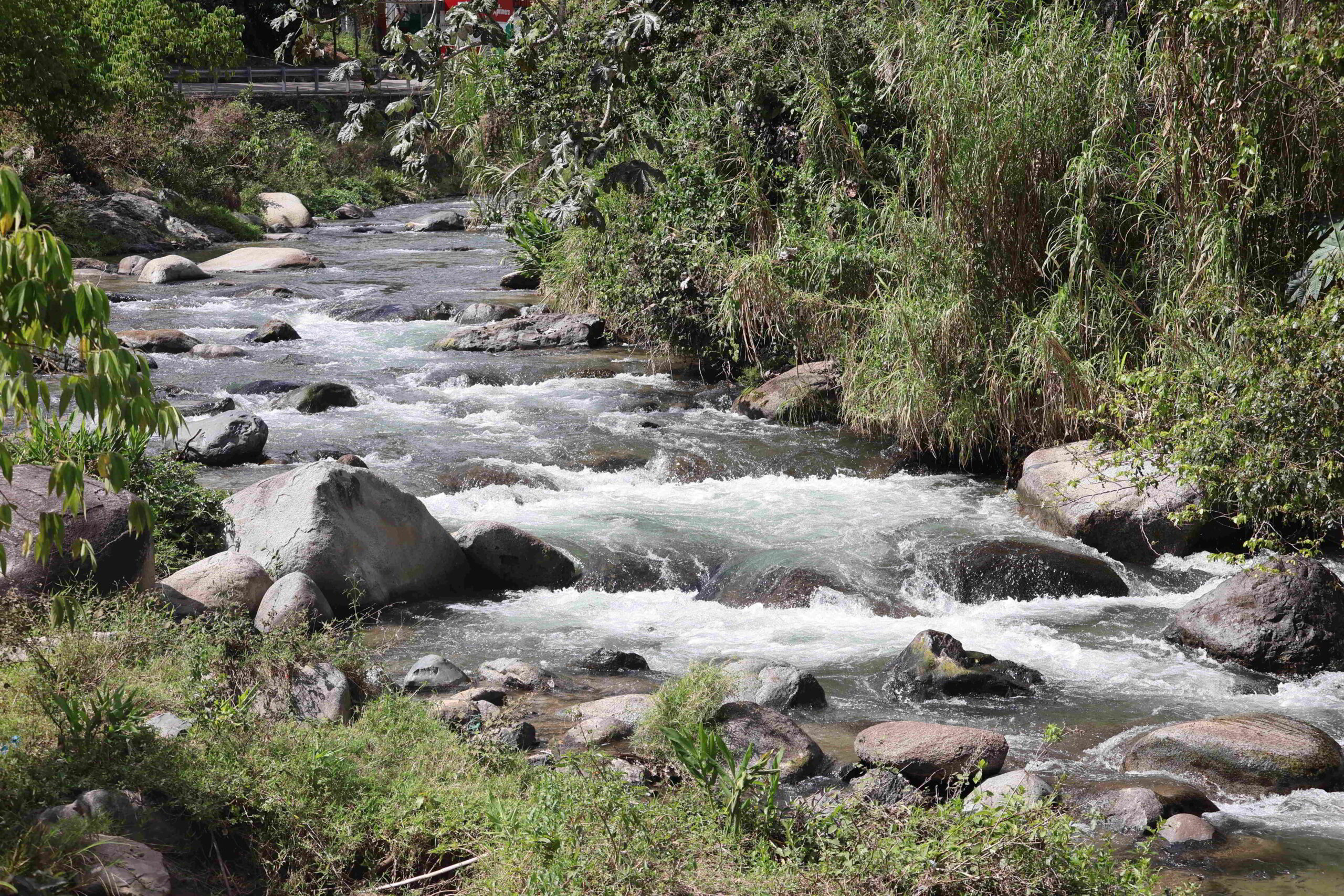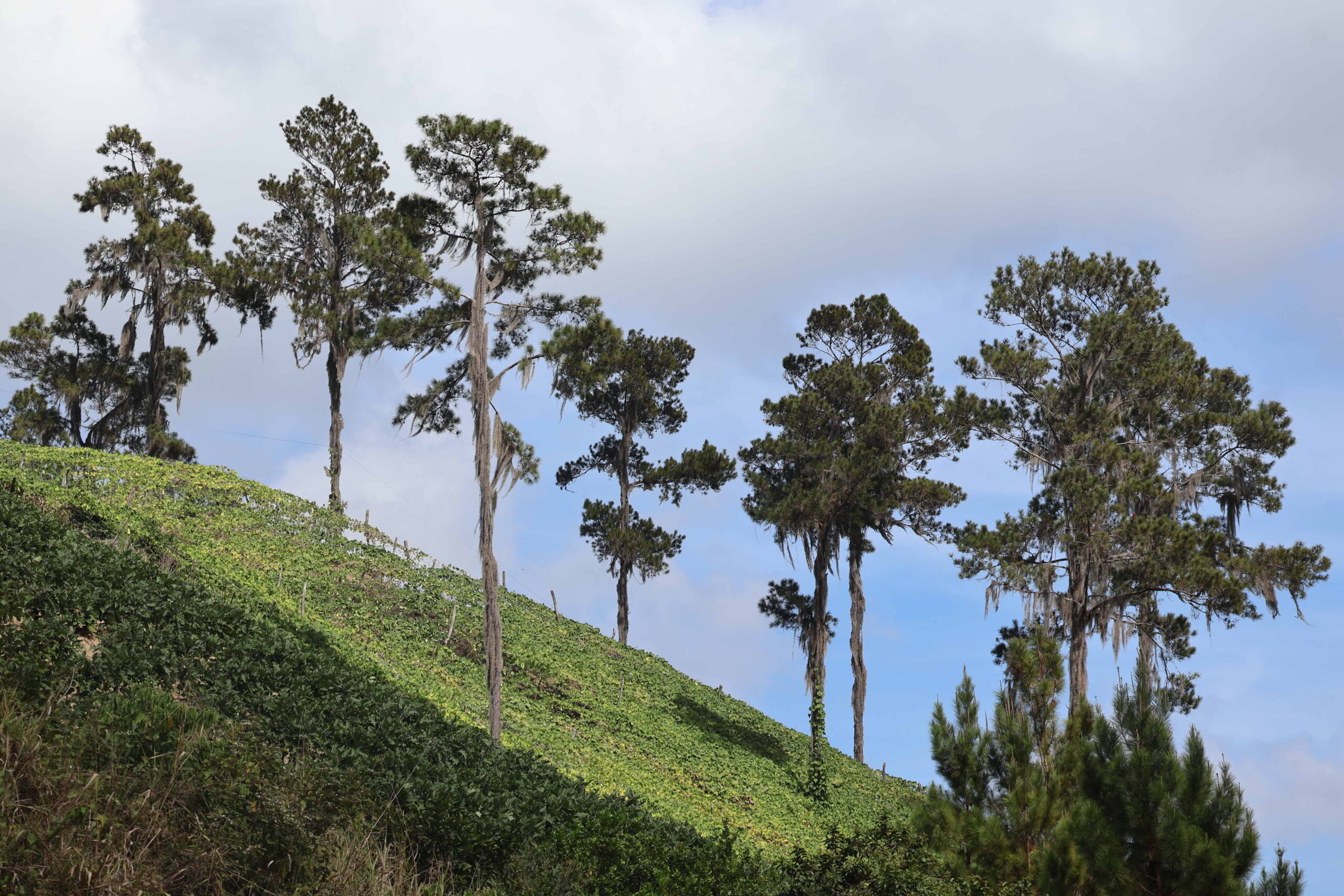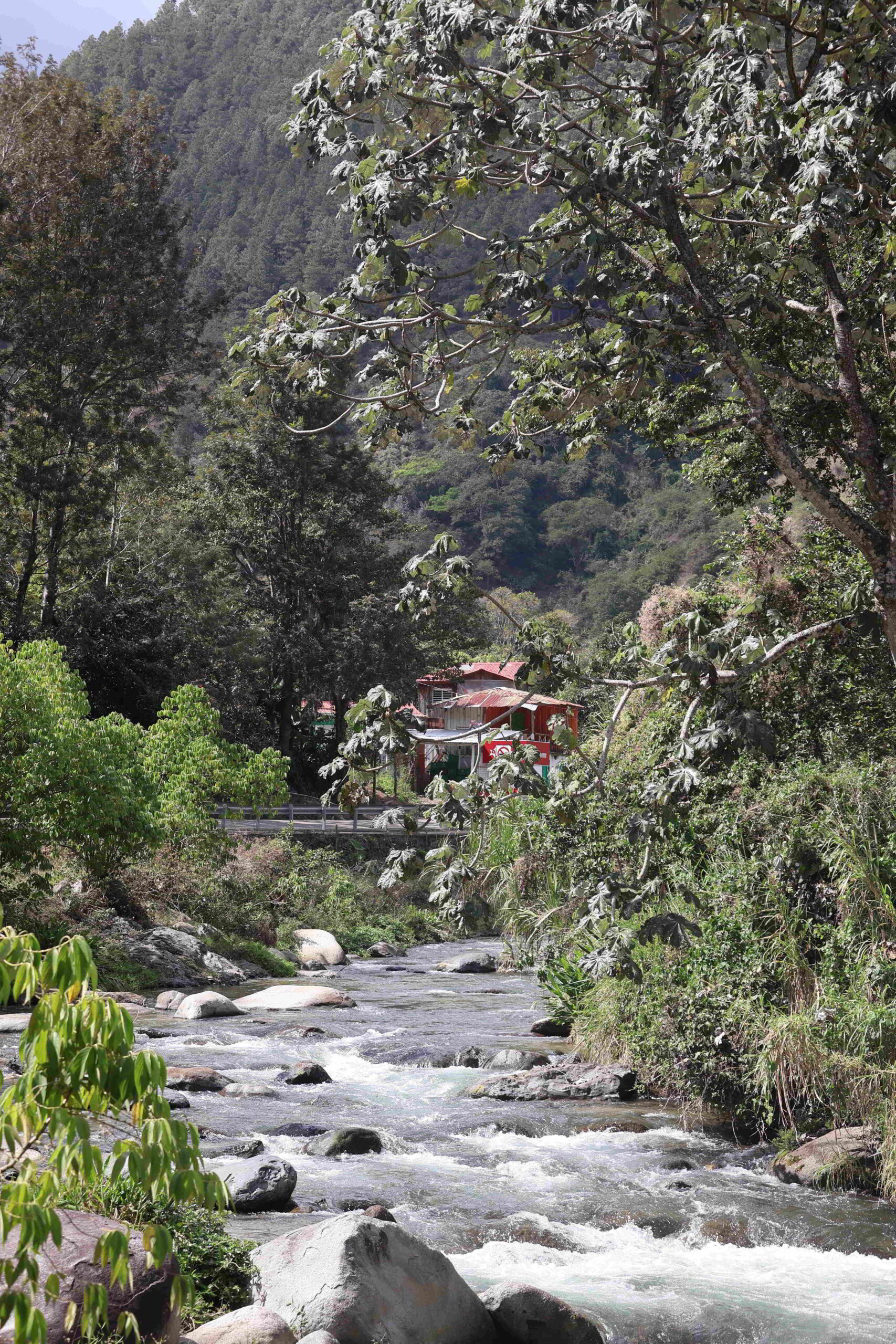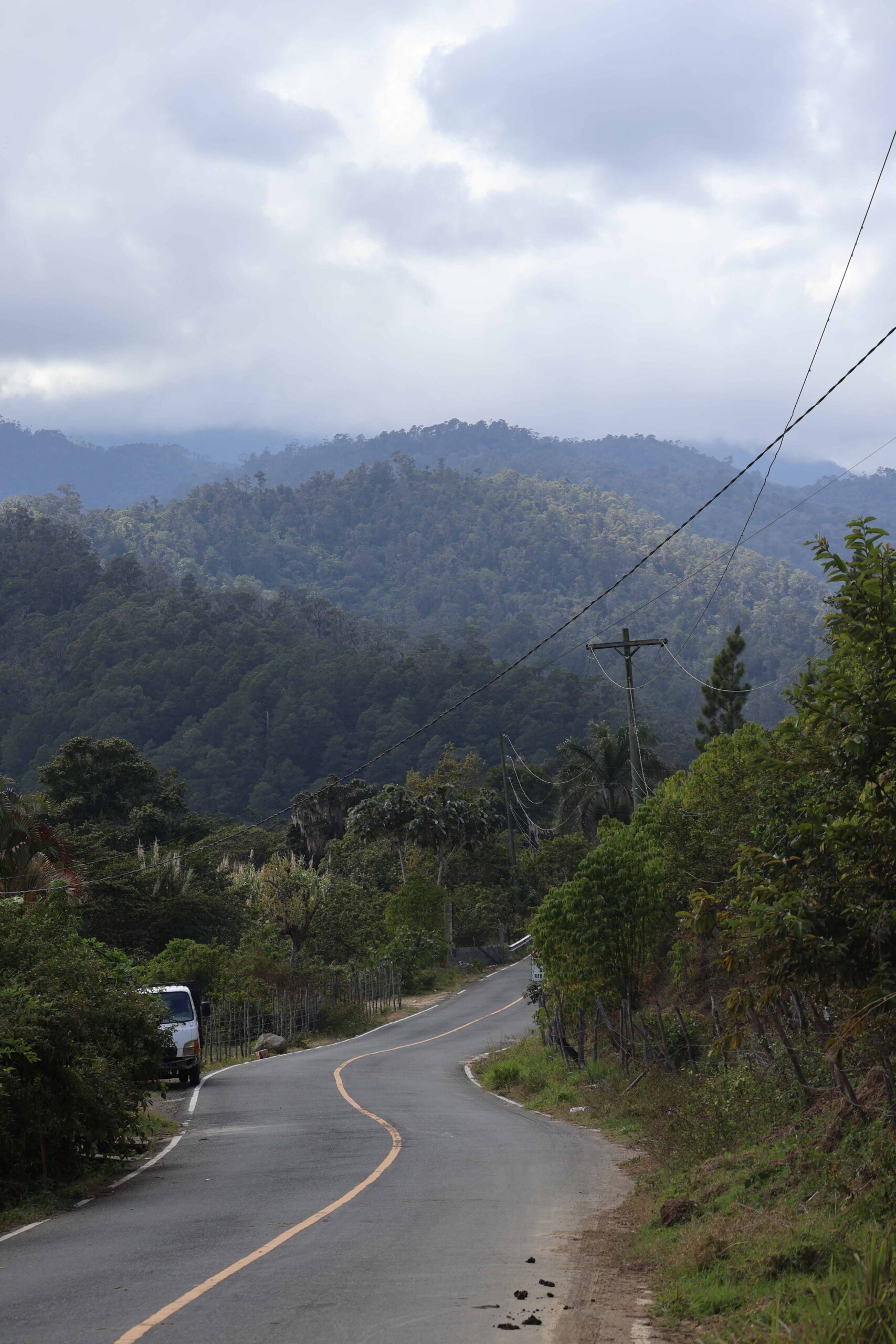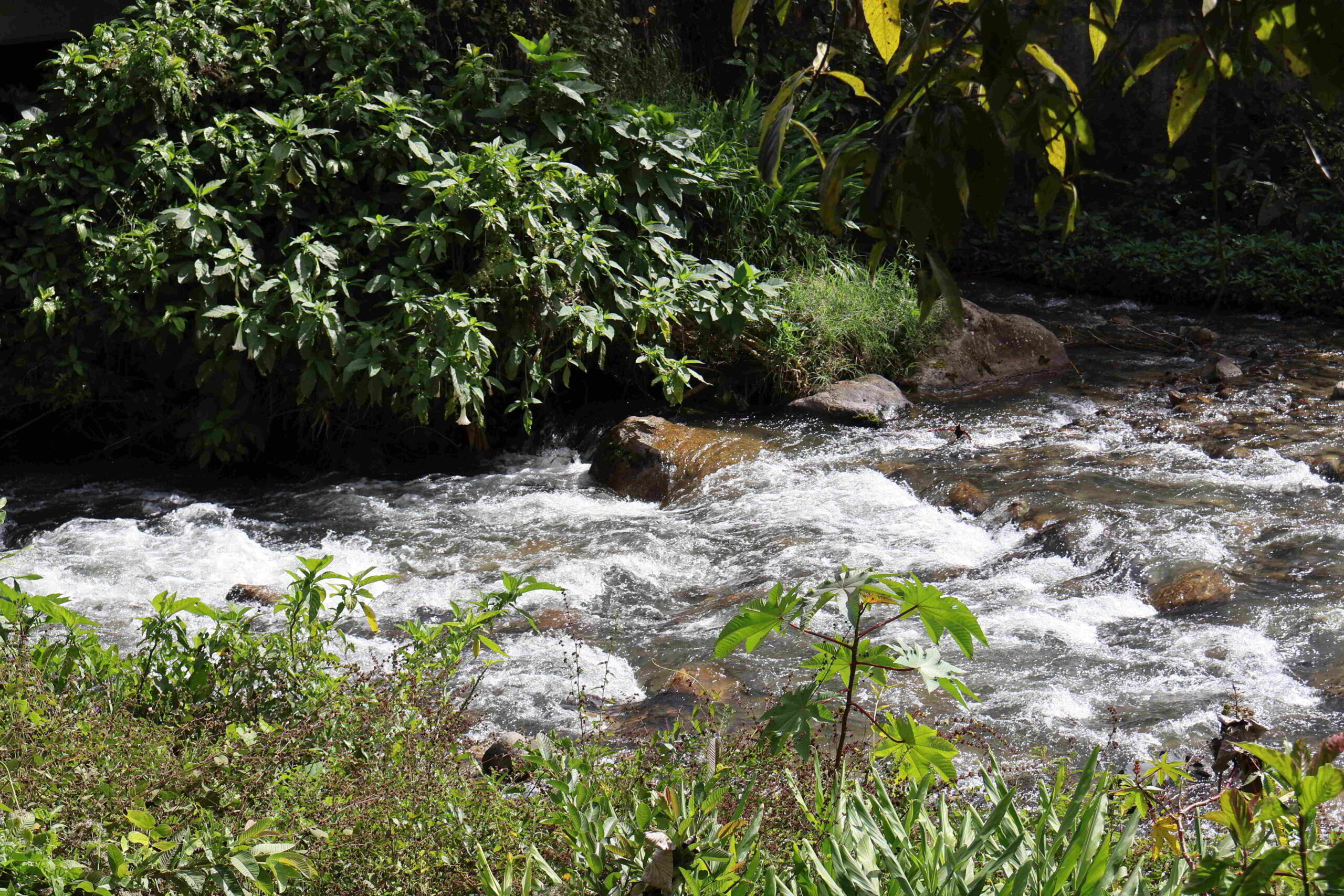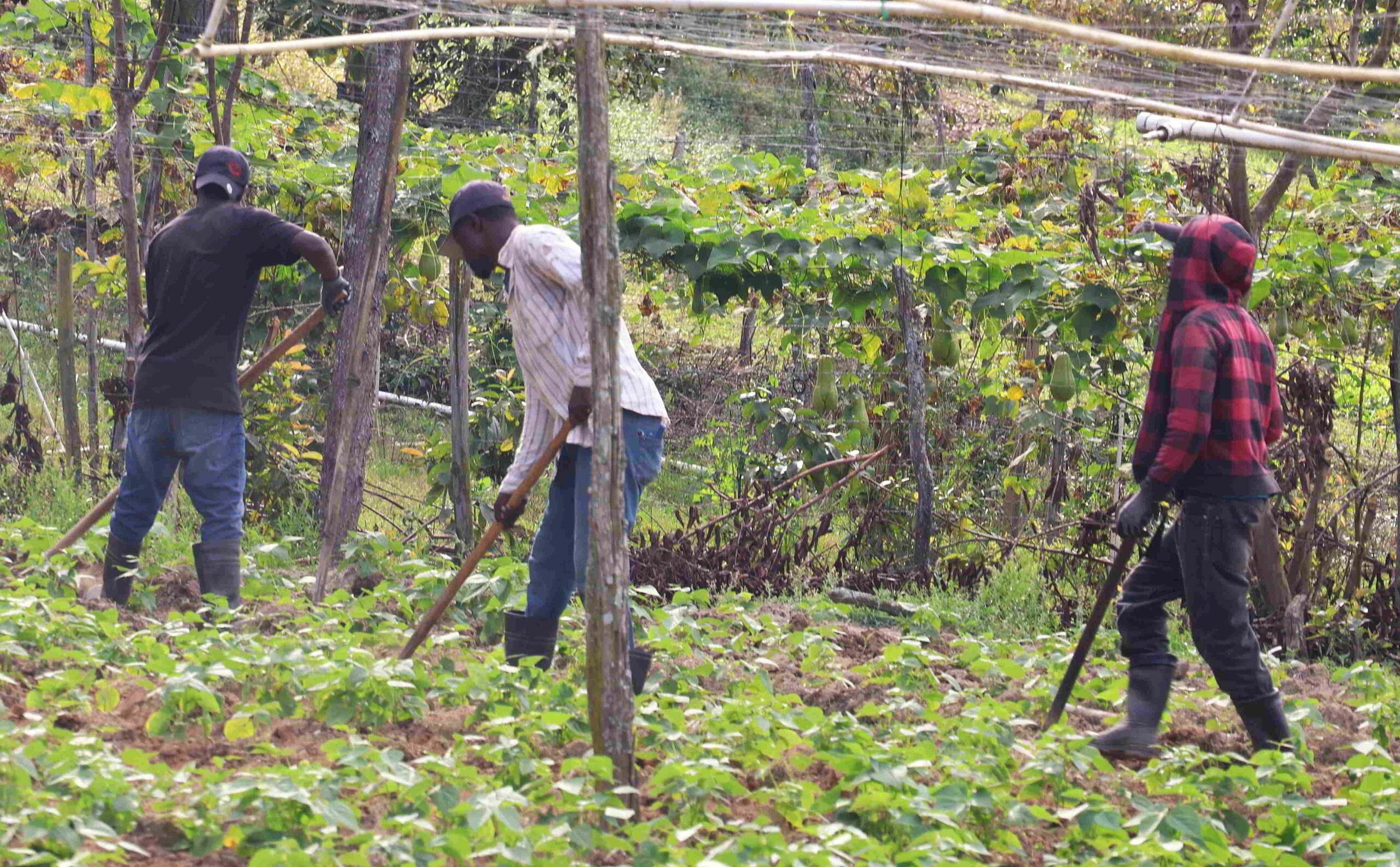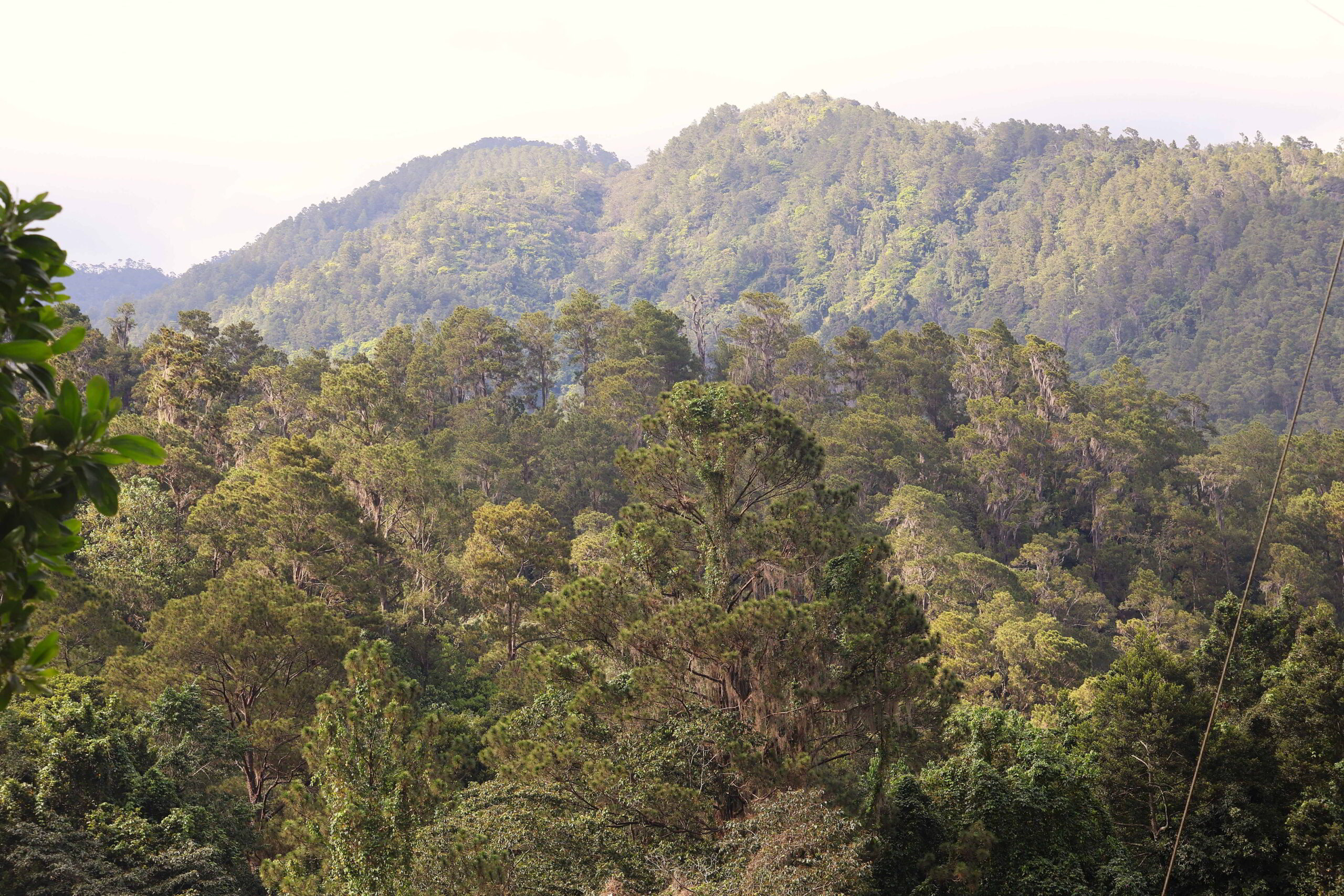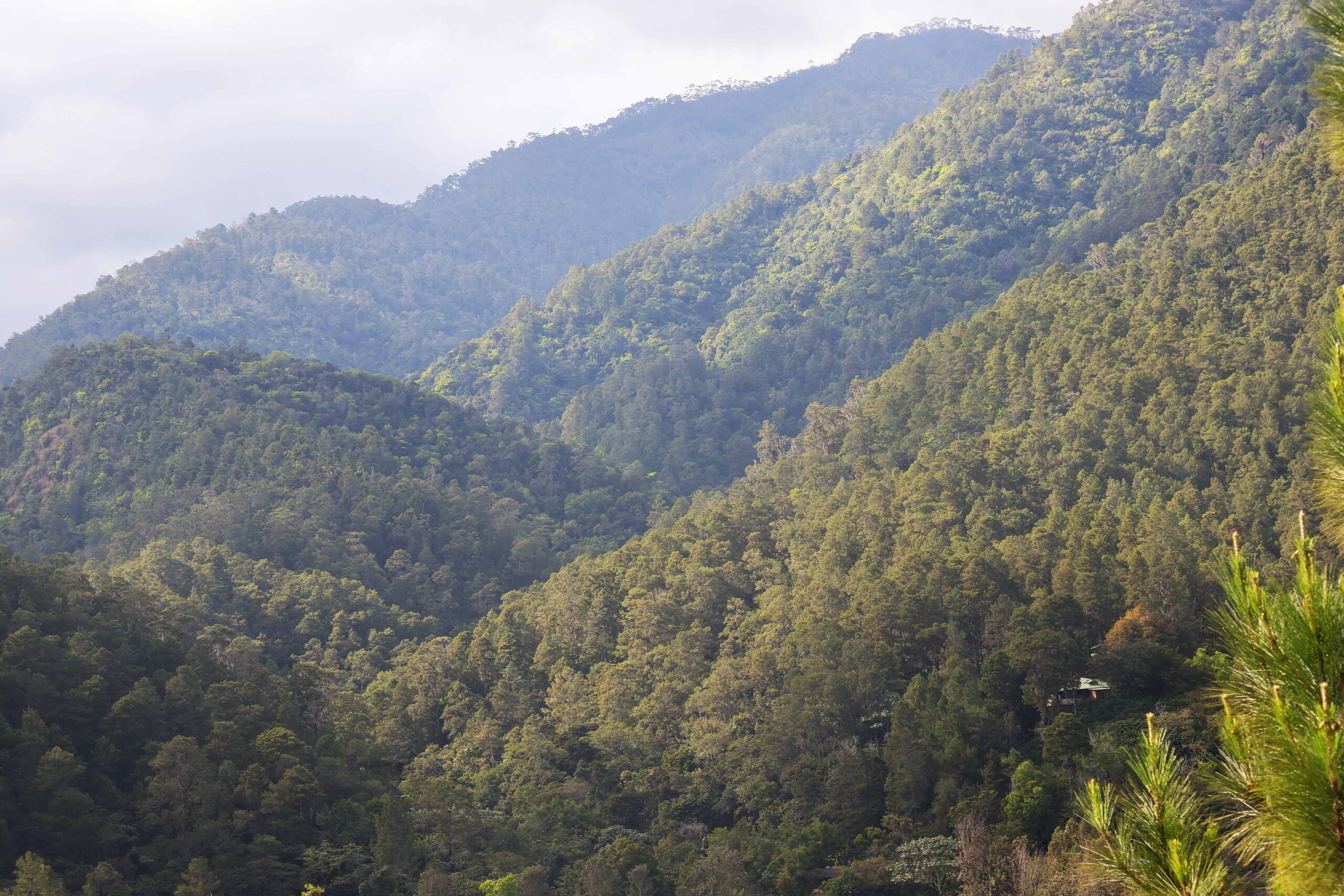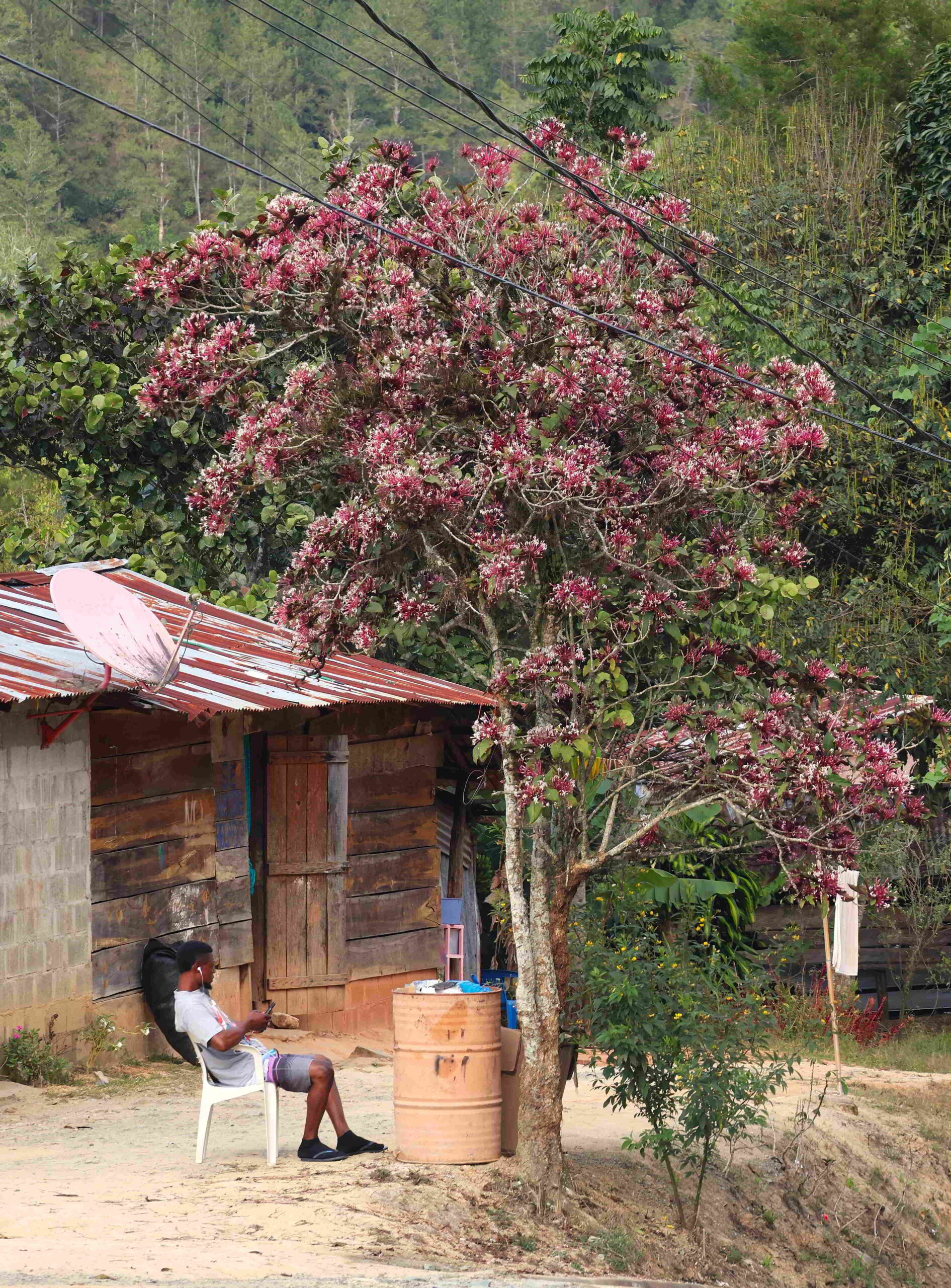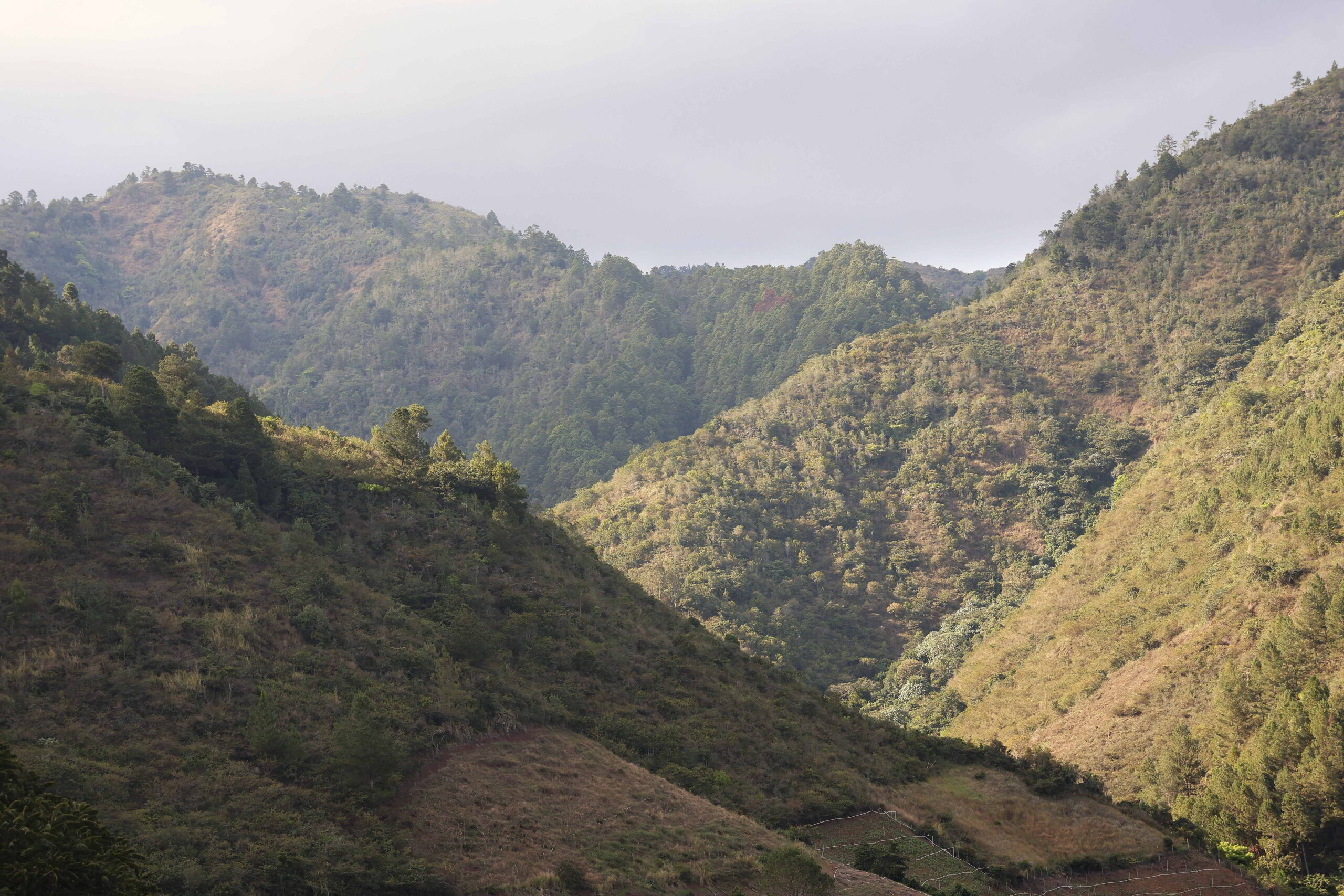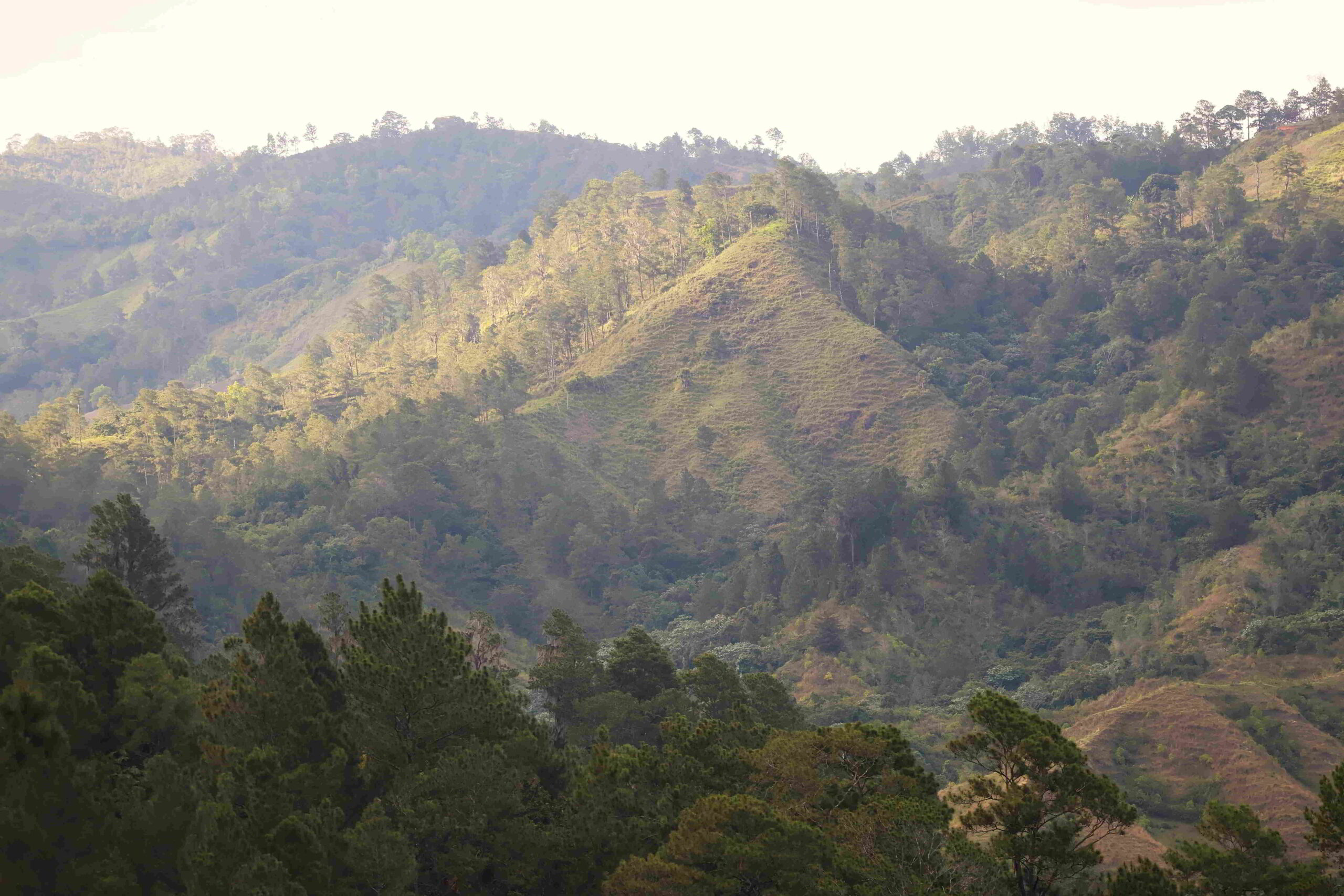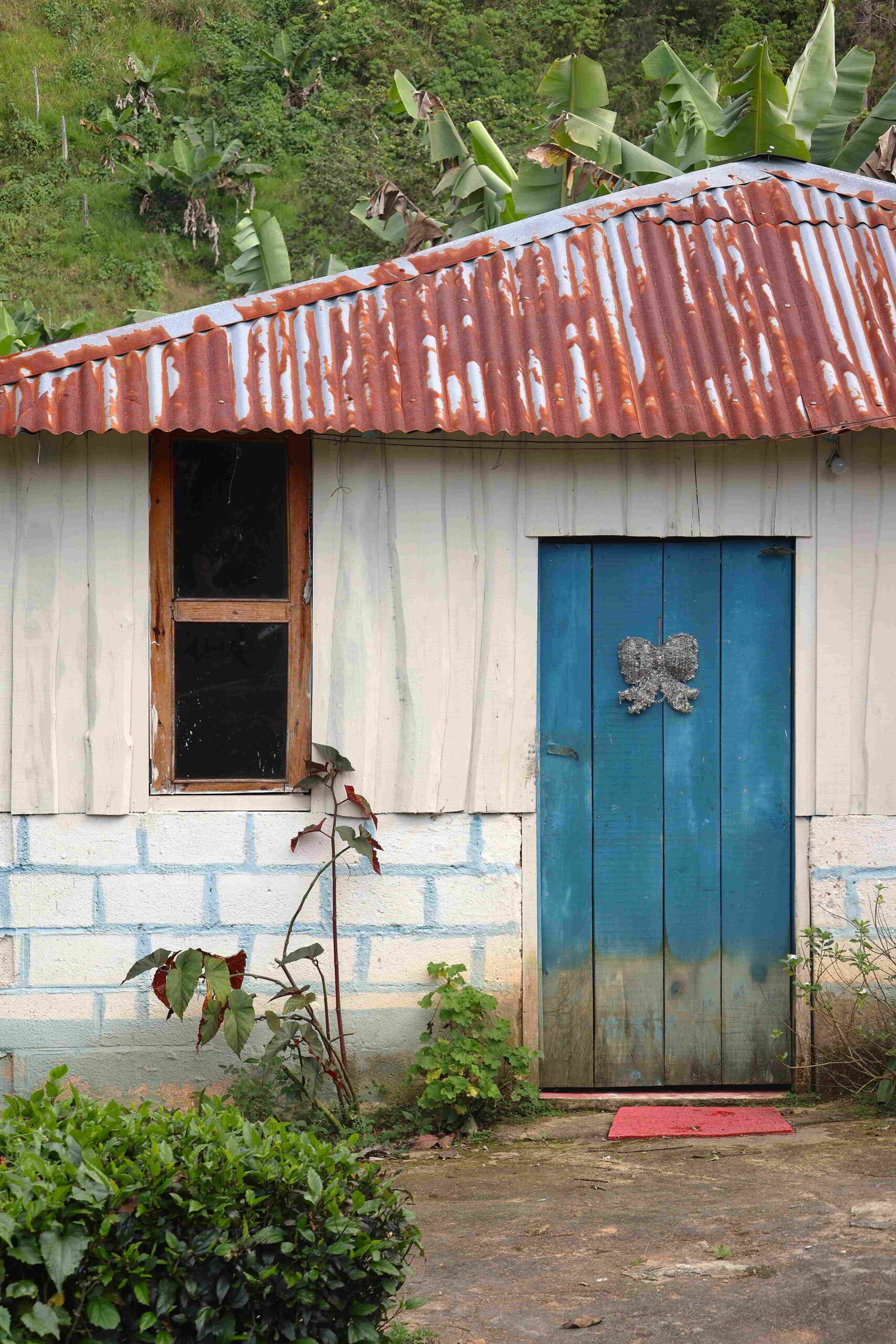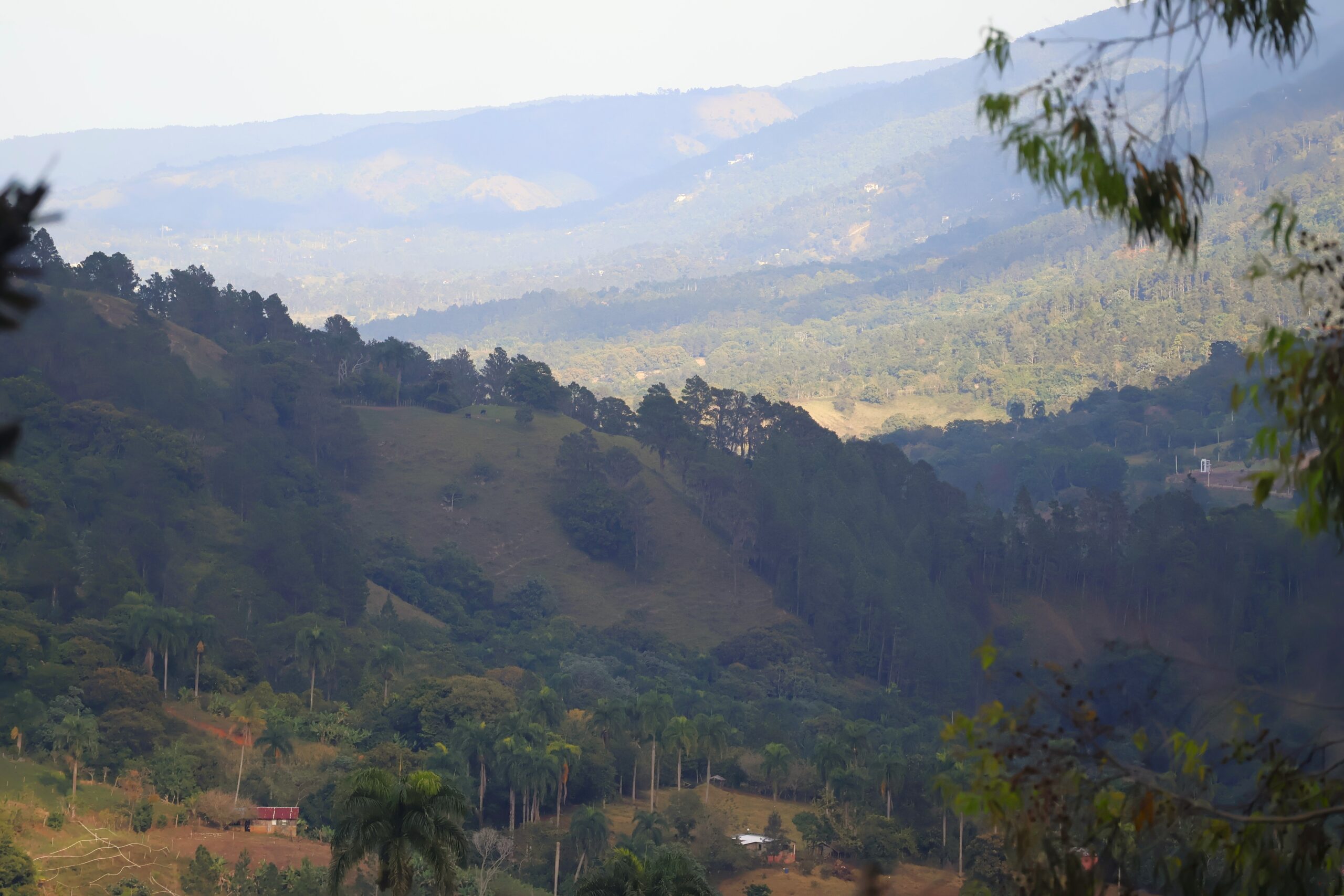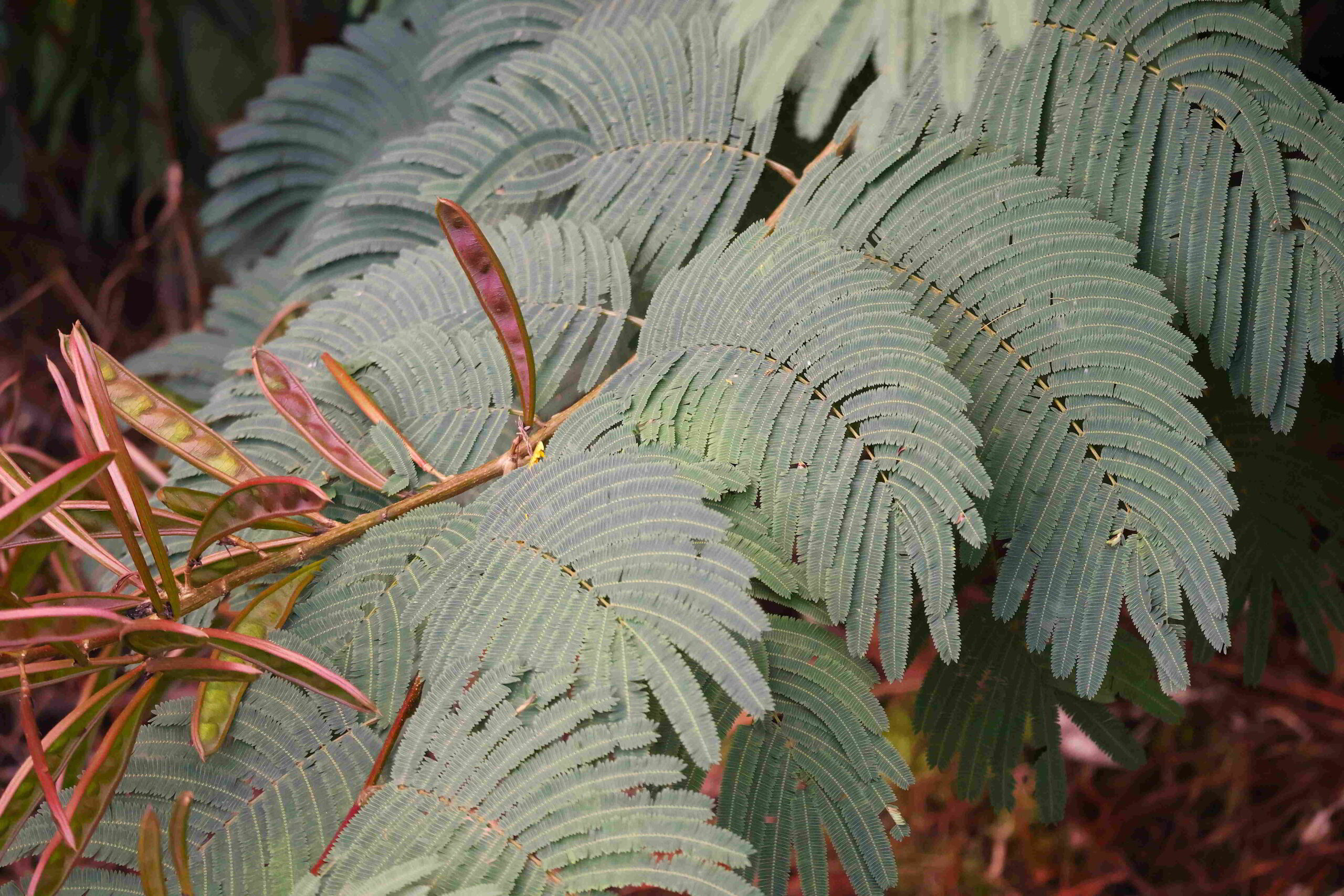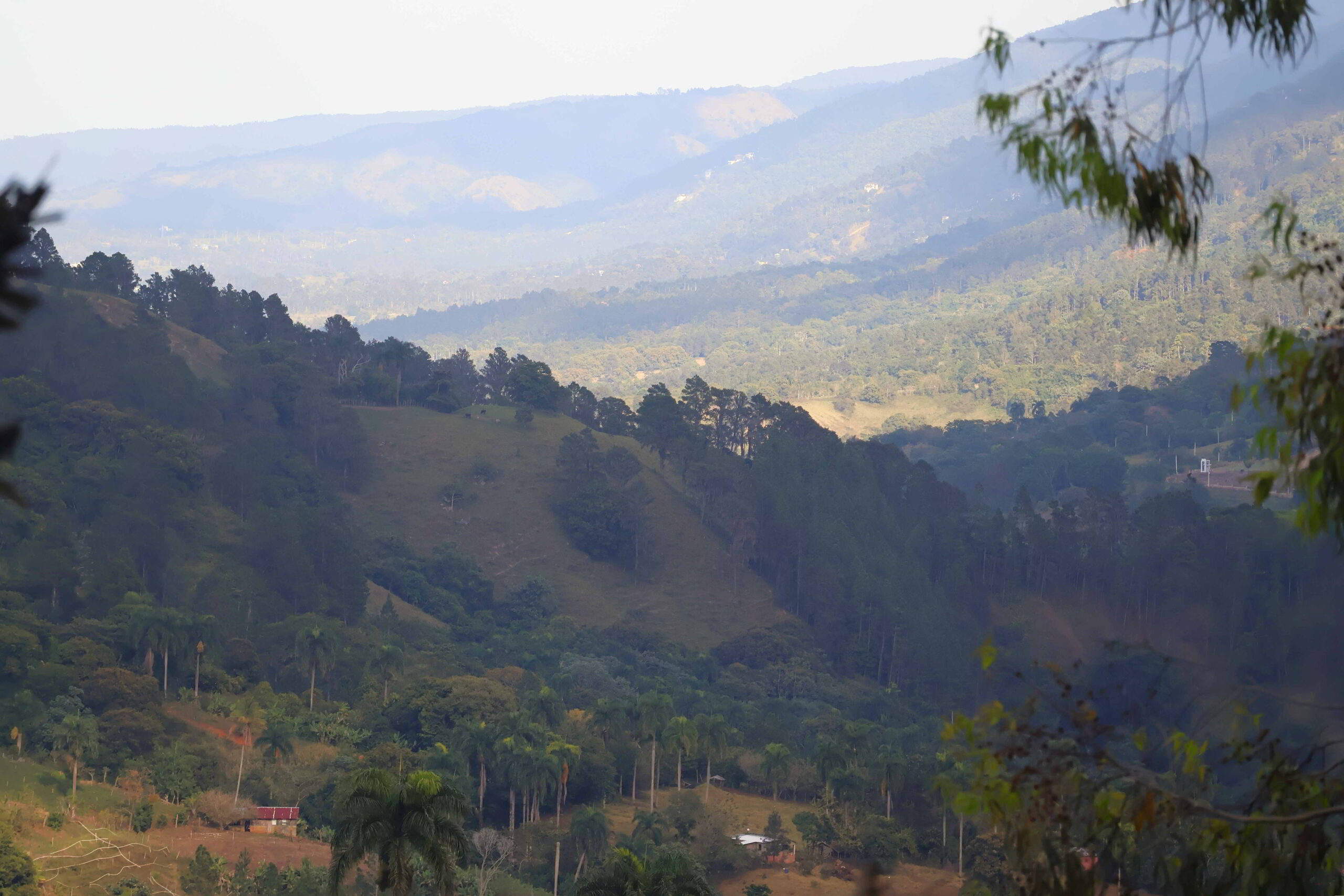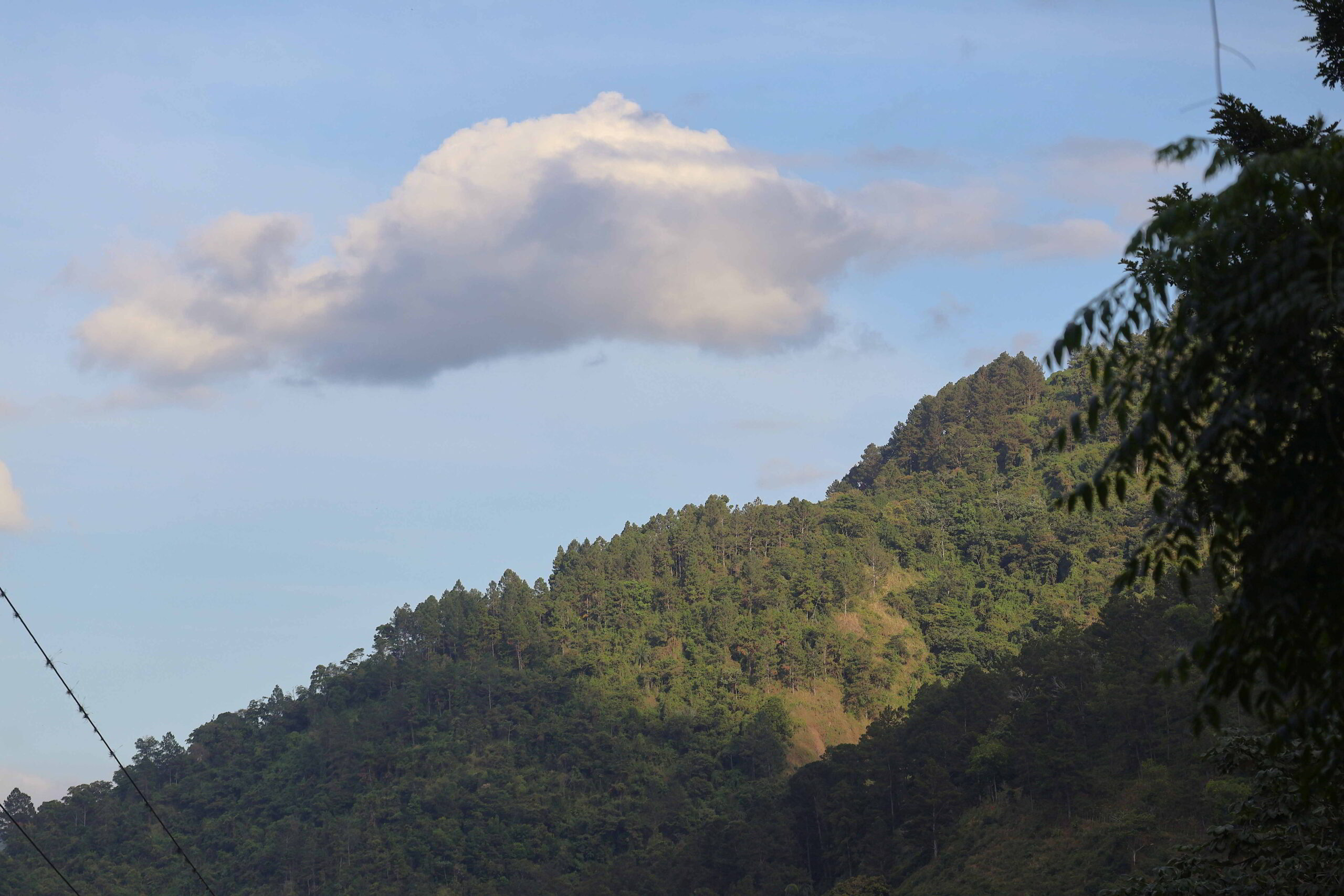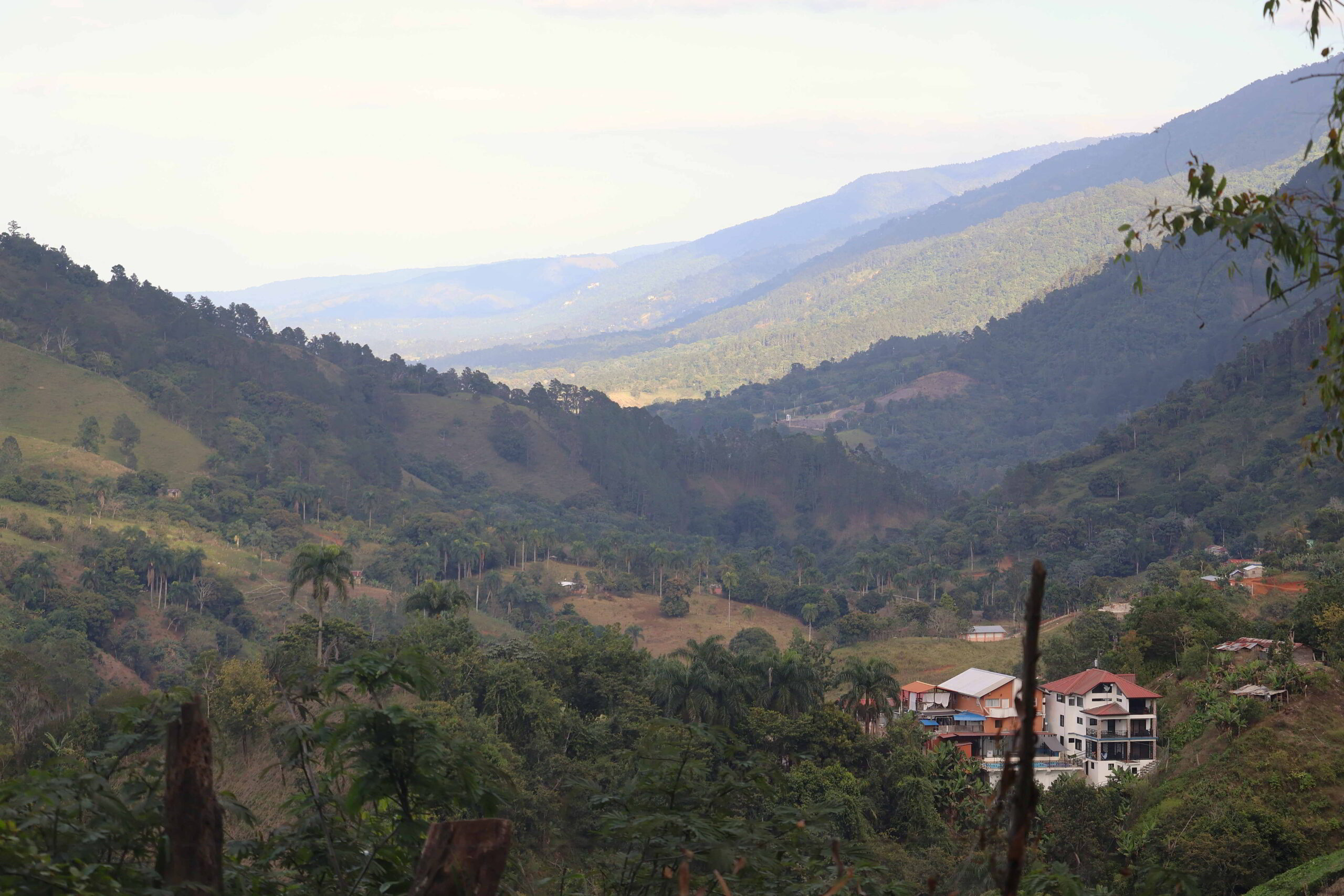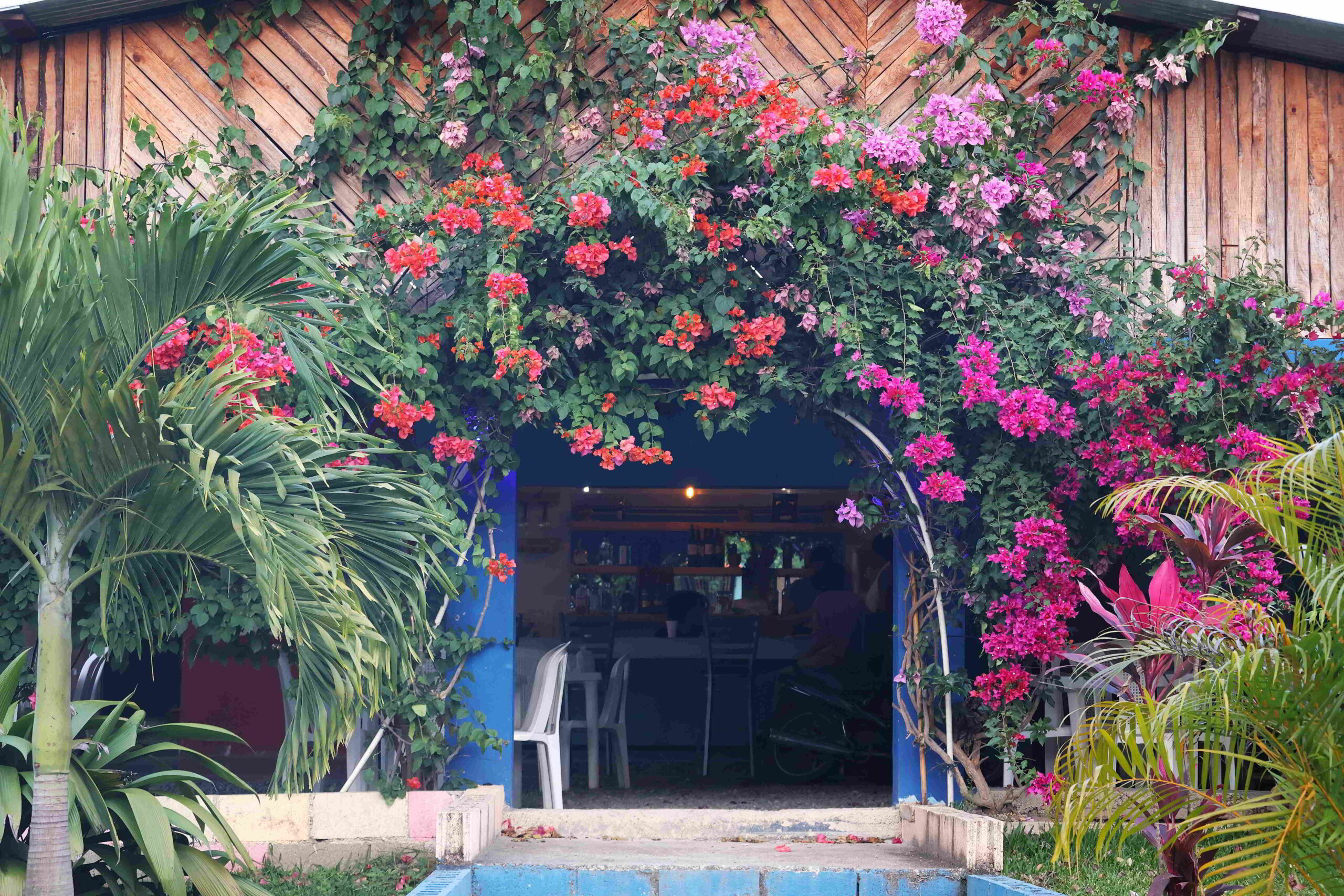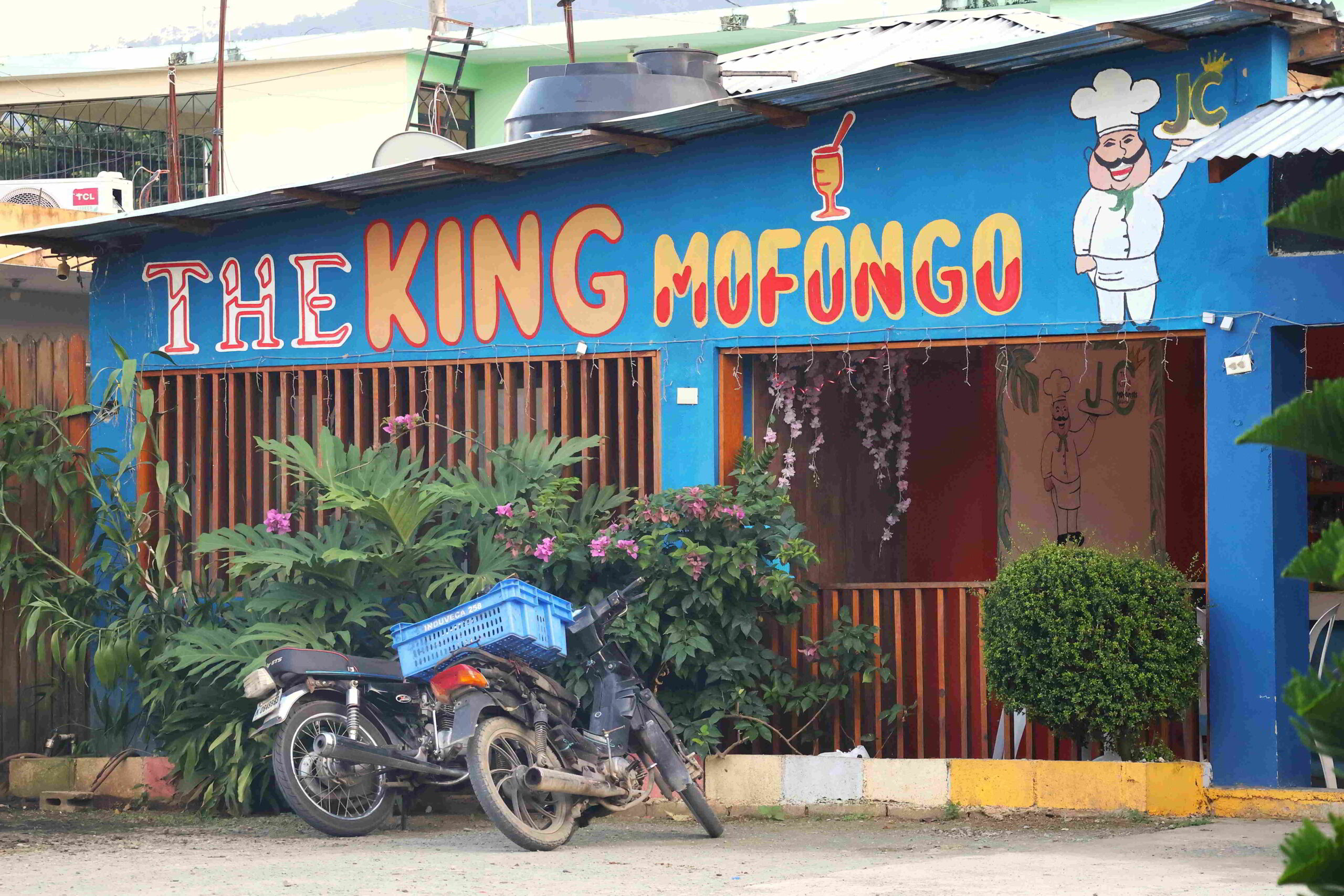February 18, 2025
Today’s journey is intended to take me into the hills to the west of Jarabacoa, to the base of Pico Duarte, the highest mountain in the country. Given the distance, the ride could pose a risk of running out of gas, so I should think about trying to buy an extra canister of gas to go. In some countries it is prohibited, but it seems that at the Shell station on the outskirts of town, they are quite content to sell a jug of extra gas of gas. Just as was the case with the gas station I dropped by yesterday on the return trip from the Salto Jimenoa II, the shop offers a surprising variety of relatively upscale food products, and of course, copious amount of alcohol, something that would hardly be expected in such a context in many other countries. At the back, a charming patio with floral wreaths presumably hung for Valentine’s Day; the place conveys a sense that it is a destination, rather than just a place for convenience shopping while tanking up for gas.
The lunch counter around the corner on the main road has its own steady stream of customers ordering takeout containers with heaps of white rice, ladles full of oxtail stew or chicken in brown sauce to which smaller, translucent condiment containers are added with what looks like pea stew. I have come for the empanadas shown on the outdoor sign, but it turns out that they need to be finished in the fryer, which signals an unfortunate wait. But once they have been prepared, the deep-fried savory pastries are a substantial step above the flaccid baked goods I have tried in the country before.
The road to Manabao is the same as the one to La Vega, to the former running to the south of Jarabacoa and to the north to La Vega. It continues along the relatively even valley that Jarabacoa is located in, then gradually begins climbing, the road weaving gently, then less so, running along the slopes of steep hills, increasingly dramatic views offered of the deep valley below along which the two lane road flows. The traffic consists of mostly motorcycles and only occasional cars, but the large trucks that do pass are a problem due to the narrow state of the road. Best to stay on the far right all the time, if anything due to the constant stops that I take to shoot the breathtaking scenery.
I have traveled through so many mountainous environments in recent years, but am always grateful for the renewed vision of this beautiful environment, what with the spectacle of sunlight filtered through the palette of clouds dancing across the steep green slopes and the succession of hills separated by deep ridges. The hillsides are covered by a mix of forest and grassland, with patches of agricultural plots visible as well, pointing to an agriculture of a more artisanal rather than industrial nature. The barren portions are presumably used for cattle pasture.
For the elevation I am traveling at, the temperature is surprisingly moderate, far from the excruciating heat I would have expected. The sky is largely blue, with little threat of rain, although the occasional billowing cumulus cloud floats languidly in the blue above. The seductive beauty of the mountainous environment is underlined by the brilliant colours of the flowering shrubs and trees, the ubiquitous bougainvillea, the stunning orange clusters of flowers of the African tulip trees, and the stunning starburst bush flowers, with their thick pods of scarlet and ivory flowers.
The economic activity in the region focuses on agriculture, and most or all of its smaller market gardens support people with food, and also offer the opportunity to sell the bulk of the output on local markets, or perhaps to wholesalers. It isn’t clear whether coffee is grown in the region, although the hilly terrain certainly favours the relatively lucrative crop. The locals walking along or standing on the roadsides seem friendly enough, but pay little attention to what may be outsiders passing by, unlike in some of the other countries I have been in – and where it is far easier to identify visitors. People are eminently helpful when asked, not that it is easy to understand their Spanish. The economic well-being of these people certainly departs substantially to that of the tourists who come here to experience nature, although I don’t see any foreigners, who appear in very limited numbers even in Jarabacoa – in presumable stark contrast with the resorts that line the coastline of the country.
One of the attractions of the countryside outside of Jarabacoa is the Balnearios de Manaboa, which happens to be nothing more than a rudimentary installation that has been set up next to a creek that crosses the highway, with some relatively shallow rapids interrupting the flow of the languid watercourse. The paved concourse is shaded, includes some benches, and offers enticing views of the flowing water from the vantage point of several stepped terraces. The site is relatively run down, the concrete worn and not maintained, but other than a few locals that appear for a brief swim in the water, leaving shortly after arriving, it is peaceful and private, a suitable place to interrupt the afternoon’s ride.
On the trip to Manabao, everything seems to have gone perfectly – perhaps too perfectly. Now the automatic starter on my scooter has stopped working – even worse, pretty much as far away from Jarabacoa as I could be. Perfect. I try kicking the manual starter, but not only does it seem jammed, but it has almost no effect – not to mention that it seems as if it will break off after some of the more aggressive kicks. Sigh. Finally, attempting to push the bike while thrusting at the kick starters turns the engine on, and off I go in the direction of La Cienaga, essentially as far as the paved road goes in the direction of Pico de Duarte.
As per one of the locals that has just visited the balneario, you can’t see the mountain peak from the road anyway, so I certainly shouldn’t bother trying to spot the peak from the road. Further along, the landscape offers more views of stunning steep hills, with the play of light and dark on the summits, the rich green forest flowing down the slopes. La Cienaga itself is nothing more than a small, unassuming agricultural village, contrasting with the scattered lodges accessible from the highway that cater to an entirely different demographic.
And then it is time to turn around and return to Jarabacoa. The ride back to Jarabacoa is far quicker than the trip out, and despite the relatively short distance, it seems that the afternoon has just slid by. The hilltops still shimmer in golden light in the advanced hours of the afternoon, warranting the occasional shots from the usual roadside vantage points on the descent towards my base, each stop the scooter engine dying and requiring a manual restart.
A moment of panic walking towards Parque Duarte: when I check my email, I see that I have received an email regarding the cancelation of an Airbnb reservation. Not that I had planned to do very much in the town centre, but now my mood has definitely gone downhill – except when I return to the apartment on the periphery of the centre of Jarabacoa, I realize that the cancelation applies to an entirely different place, a house that I had booked on Sint Eustatius in the middle of April, which was by far the cheapest place on a very expensive island in the Caribbean of Sint Eustatiusm (Dutch Antilles). The option may be to simply stay in St. Kitts and not make the side trip to the tiny island immediately to the north.
The owners of the apartment in Santiago finally confirmed, although the usual debacle of a mandatory late check-in arises …
